#and rejecting mori's philosophy
Text
I've been having a lot of reverse!skk thoughts lately.
Setting up some context: Oda never died during the Mimic arc. Dazai still unravelled Mori's plan and now there's a huge rift between them. Dazai never trusted Mori completely, and now he barely does. Their dynamic had turned into a power play between them.
Oda's kids still died. Oda lives having survived his suicidal massacre but the weight of his loss and the blood on his hands weighs on him. He is no longer a pacifist. His dream for writing a novel is gone. Dazai has tried to help him, but he can barely help himself so he's kinda bad at it.
Ango's hanging out with the government now! No one trusts him :/
Chuuya leaves a few months after the Mimic incident. He comes across a set of documents proving Mori's involvement with the Arahabaki project as well as his personal tied with the military doctor that is Chuuya's real father. After failing to kill Mori for his betrayal, Chuuya is now a traitor. No one knows why he tried to suddenly kill the Boss, but the incident itself is whispered throughout the entirety of the Mafia. People point to Chuuya's origins in the Sheep as proof that he was a traitor all along, bidding his time.
Dazai doesn't know why. Its driving him crazy.
Chuuya thinks Dazai knew the entire time. They're a mess of zero communication.
Chuuya spends his time hiding out in different parts of the world (he's got friends in the UK so there's that!) He looks for his parents and finds them, only to leave them behind like he's done in canon. He's aware the Mafia is keeping tabs on them, but that's not the only reason why he left.
He gets a little reckless, beats up some bad guys. He doesn't know exactly what to do with his life, so he's kind of mess.
His little vigilante spree reaches Chief Taneda, who sends Ango to keep tabs on him and offer him a job. Can't have a former military experiment of infinite power running around without supervision.
Chuuya, uh, does not take the offer well (poor Ango).
Chief Taneda finally confronts him in person, says if he wants a job Taneda knows a guy who is not affiliated with the government and whom Chuuya might like (received almost as badly, but Chuuya considers it).
While Chuuya's mulling over this weird offer, he runs into a human trafficking organization that was in conflict with the Sheep back in the day. He's got an excuse to beat up more bad guys. Guess who he ends up running into (yes it's the Agency).
More specifically, it's Ranpo! They squabble, they team up, the works. Ranpo is like "Do you want a job" and Chuuya is like "That's sus but I'll think about it" (he does in fact want it)
Chuuya ends up meeting the other Agency members before he agrees (Ranpo 100% has nothing to do with that. Totally.) He likes them. He thinks they're all insane. He misses having people around who aren't there to double cross him. He takes the job.
Enterance Exam! I'm so sorry Kunikida.
Chuuya avoids the PM like the plague.
And then he meets Atsushi.
#bsd#bungou stray dogs#nakahara chuuya#soukoku#dazai osamu#reverse!skk au#ill make a part 2 of this eventually#ada!chuuya#give him a support network please#bsd au#skk#a lot of this is just#chuuya slowly realizing how much mori has taken from him after the revelation#and rejecting mori's philosophy#cause everything that went wrong in chuuya'#life is kind of mori's fault??
1K notes
·
View notes
Text
IM DONE STARVING YOU GUYS!!
Pt.3 of Chuuya Fanfiction/Headcanons.
2.2k Words
Disclaimer: This is basically like a fanfiction to the Headcanons. Explaining the course of which the reader and Chuuya "nurtured" their relationship. This is only the first part of the story because I didn't want to continue starving the people for so long so please enjoy it. This scene was recommended by someone also to include so I did my best. It contains the following things: groping, harassment (not from Chuuya!), choking, cursing, unspoken tension. ENJOY!!
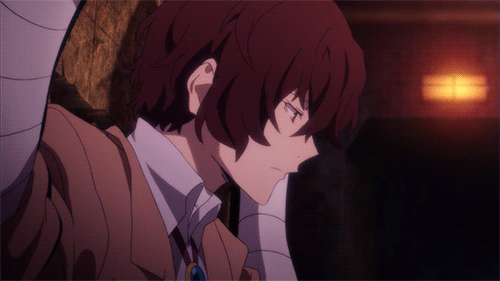
Months went by of working in the Port Mafia together and upon analyzing how well Chuuya mentored you, Mori decided to partner you both often on missions. Oftentimes it was you, Chuuya, and one other person who was a strategist. The partner hated tagging along due to you and Chuuyas banter but it's just a regular occurrence at this point.
JEALOUSY
Now that we’ve set the groundwork… How did you two end up falling for each other? It all started when Mori assigned you both to a mission—one that would reveal just how jealous Chuuya could be when someone else laid hands on you.
The mission involved seducing a big-shot gambler to draw him away from his table long enough for Chuuya to search his belongings and determine if he needed to be eliminated. The man might be innocent, but Mori’s philosophy was always better safe than sorry.
Mori: I have a task for both of you.
Chuuya and You: What is it?
Mori: This man might be in cahoots with a well-known gang around Yokohama. I need you to locate him and search him for any leads.
-
Chuuya: I could handle this by myself.
“As if, you always need me.” You nudge Chuuya’s shoulder, and he immediately wants to toss you out the window.
Chuuya: I do not NEED you!
You: Yeah, right. You need me like you need your next breath.
For some reason, this line struck a nerve with Chuuya. Not because it angered him, but because it sparked a twinge of desire. He enjoyed bantering with you, realizing that his days without you were a blur compared to the ones you spent together on missions. He grits his teeth and clenches his fists, his cheeks growing red as his breathing becomes shallow and jagged. Mori, of course, notices Chuuya's sudden silence, his hand raking through his hair to appear casual while his face flushes crimson.
Mori: I have an idea, Y/N. You’ll play an imperative role in this mission. I need you to seduce the gambler. It's a quick and easy way to ensure our success.
You: Alright, that's fine. Nothing difficult.
Chuuya’s eyes widen as he processes what Mori just said. Seduce? Seduce??
Mori: Unless… our fiery friend here has a problem with that. Huh, Chuuya?
Chuuya: Problem? No, there's no problem. Why would I have a problem, Boss?
Mori: Judging by the redness of your face, the sudden lack of aggression, and the sweaty palms… I just wanted to ensure you’d be okay with her seducing another man.
Chuuya didn’t quite know what he was feeling, so he vehemently rejected the suggestion.
Chuuya: What the… groans Let’s just find the guy, Y/N.
He's dragging you by the arm out of Mori’s office, his hat over his face to hide his flushed expression. He doesn't speak for a while, walking straight out of the PM with you stumbling behind, struggling to match his long strides. He must be really bugged by something; you didn’t know he could walk that fast.
Later, you both enter the casino, greeted by flashing lights and bustling aisles. Addicts play their hearts out, sending their money spiraling down the drain. You walk in front of Chuuya, your hips swaying fluidly with each step. Something clicks in Chuuya's head—his eyes are glued to the sleek motion of your backside instead of his surroundings. Shit… Why the hell am I so entranced by this? They've always worn this, what’s different today?
You’ve put on something more form-fitting for the mission, a little more business casual but not completely safe for work. Your curves are hugged in all the right places, and he can’t tear his eyes away. How your legs are so nice, toned, and thick, just like…
You continue to scan the area, and Chuuya makes his way to your side. “See anything, brat?”
“No, not yet, Chuus.”
“Chuus? Seriously, you're such a loser.”
“It’s just a nickname, don’t be a dick about it.”
As you both move through the casino, you spot a big, burly man at a table with a group of alcohol-reeking guys. He’s holding a deck of playing cards, spinning one on his fingertips. His chest hair peeks out over his half-buttoned shirt. Not only does he look like a big-shot gambler, but he also has a suspicious duffle bag under his chair.
Chuuya, that’s definitely our guy.” Before Chuuya can react, you’re already walking over and asking to sit on the man's lap. All part of the mission. Chuuya lingers in the distance, but his eyes are locked on you both. Watching as your hands grace the man's chest, seducing him into letting you sit in his lap. Your fingers trail down his neck, and you whisper compliments into his ear with your lips brushing the lobe as you speak. The man looks at you like you’re the hottest thing on earth, cards damn near spilling out of his hands as his friends watch in awe, and Chuuya is clenching his fist, trying to ignore the heat rising in his cheeks.
“I fuckin’ hate that brat. No way.”
The man's rough hands wrap around your arm and pull you onto his lap. He adjusts in his chair a little before continuing his game. Throughout the entirety of it, you can feel his pants tightening underneath you, the groin area of it pushing against the swell of your ass. You use it to your advantage and grind down into him causing his breath to hitch.
“Ya like that?” You whisper into his ear, catching a glimpse of Chuuya out of the corner of your eye. He looks fine.
“Don't start sumthin ya can't finish, sweetheart…” He responds, his voice husky and smooth, like how a villain would sound. A large hand comes down to rest on your thigh, pulsing between light squeezes and ones with more pressure.
Chuuya’s eyes are piercing your skin like bullets now. It feels like his clothing is tightening on his body, leaching to his flesh as it collects sweat. His eyes are glued to the hand on your thigh, his mind wandering as he watches it ripple with each touch. Anyone who was watching him right now would see him unballing his fist and latching his hand onto his own thigh, squeezing it tightly in his hand in tandem with what he was seeing. Suddenly the burly man stands up with you still in his arms, his big thighs scooting the chair back for him. You look no less than cocky with a big grin on your face. The man has you in his arms bridally, your upper body reclining against the crook of his arm, head suspended in the air, and hair cascading downward under the pull of gravity.
“Got sumn to take care of now, boys. I’ll catch ya later.” He steps out from between the chair and the poker table, leaving the duffle bag under his chair as planned. This was supposed to be Chuuya’s cue to collect it, to search the contents for anything suspicious, but his feet felt cemented in place by the weight of his envy. Why? They were always at each other's throats, so why the sudden concern? Not even he could answer that, but the pool of warmth forming in his pelvis could. He eventually snaps out of it when he sees your arm waving frantically, echoing the look on your face as you mouth, “Chuuya, grab the bag!” The man rounds the corner, disappearing along with his muscular frame and you in his arms.
You barely had half a second to scrutinize Chuuya's face, and all you could see was pure aggravation. That's the only detail you could fixate on as you were whisked away to the casino's backrooms. Then, Mori’s words echoed in your ears, emphasizing the flush on Chuuya's face when you mentioned how indispensable you were to him—like his next breath. Were you truly that indispensable? It was meant to be a joke, but Chuuya's intense scrutiny of the man's hands as they cradled your thigh with a fervor that mirrored his gaze during heated confrontations left you questioning. That same blazing passion, usually only unmasked when you were at intense odds, was being applied to this situation too. The realization dawned on you with startling clarity---was he starting to feel something for you?
Chuuya darts over to the table, his mouth deduced to a thin line, masking any trace of emotion. The men at the table didn't pay too much mind to the bag being stolen so it was simple enough. He tucks himself away into a corner and starts to search the bag. There was money, obviously stolen, artifacts, and documents of certain government information which was supposed to stay under lock and key. “Yeah… we definitely got our guy. Great for me, I'm itching ta-” His remarks were cut short by a throaty scream. “Get the hell off of me!”
Chuuya knew that yell like the back of his hand, he'd encountered it time and time again back at headquarters when he was screwing around. He dropped the items that were inside of the duffle and looked up, his eyes skimming to the side slightly as if the sound were right next to him. “Whattt? Thought ya liked me, sweetheart?” He was damn near ready to hurl at the commotion. He knew exactly what was going on but his body was frozen momentarily, his mouth slightly ajar as he crushed the handle of the bag in his hands. “Pretty collar ya got there. Let me show you a good time, little doll.” A smug grin plastered on his face from ear to ear. “Come on, you were damn near riding my thigh earlier, I know you're just ready for me down there, yeah?” His lips were grazing your ear as he spoke, his breath hot and rank with liquor. Your little frame was smashed into the wall by his hunky one and he wasn't relenting, not even when you started to sweat and squirm, a look of terror in your eyes that didn't betray the fear shooting through your body.
It was almost as if Chuuya could hear the leather of the choker burning into your skin as that man's hand came down on it tightly. The slight squeak and scrunch it made against your flesh as your chin flew up into the air, throat straining for oxygen it wasn't receiving. His rough hands were unyielding, merciless, as they pushed your back flush against the wall. Your head was thumping now, blood running through it like a riptide as it bumped the wall several times, but you couldn't blow your cover, not even when his hands started to wiggle their way down in between your bodies, trailing down your stomach like eerily soft trickles of rain.
“Nngh.. Ah-hach! CHUUYA--Goddamit! TODAY PLEASE!” The voices were very faint but Chuuya could hear them perfectly clear. His knees steadied as he got up from his squat quickly, using his gravity manipulation to make himself a bit lighter as he darted to the corner he'd seetn you get whirled around earlier. His body seemed to take initiative before his brain did. What was happening to you hadn't even had time to register properly before he was already halfway to where you resided chaotically.
You were starting to gasp for air as the man's hand tightened around your neck firmly. Coughs littering the air around you.
“Who’s Chuuya, hm? Some twink, sweetheart? Doesn't matter, no one's saving ya.”
“He'll kick your-!”
“Ah… watch your mouth, doll. You put yourself in this situation and now… I'm gonna get my fix outta you.”
His hands seemed to pulse, allowing you enough air to keep your vision from going out. It felt like he was about to break the choker you received from Chuuya and that made a wave of anxiety shoot through you. A pit of uneasiness settling right above your pelvis. Your feet were starting to lift from the floor slightly, onto the tips of your toes. Your teeth clenched together in a desperate attempt to wiggle free ever so slightly.
“How would your mother feel if she knew this was how you handled women?” A familiar raspy voice echoes from around the corner, followed by a blaze of orange and red light. His glare was deadly, barely any time had passed before he had the man crushed up against the wall, feet off the ground with drool dribbling down his chin. 'And just so were clear, I aint a twink.’
You’re watching the whole display from the ground, having fallen to the ground when the man released you, hacking and coughing for air while Chuuya handled the rest. When he’d apprehended the guy and freed you, he scowled at you with an intensity that rivaled a full on reprimand. His eyes were darkened and narrow, his lips stretched in a straight line. It’s like you could hear his thoughts, even in this half of a second. It wasn’t a normal seething rage, it was fueled by something deeper. Something so strong that his eyes seemed to talk on their own, like an “ill handle you later” type of glare.
#bsd#bungou stray dogs#bsd chuya#bsd chuuya#bungo stray dogs#bungo stray dogs headcanons#bungou stray dogs chuuya#chuuya nakahara#fanfiction#chuuya x reader#chuya x you#chuuya fanfic#fanfic
80 notes
·
View notes
Text
Gustav Klimt sought to show sensuality and pride in his art, and "Life and Death" shows his philosophy on rejecting Europe's history of minimizing pleasure and the moment. The Momento Mori is flipped on it's head to "remember you live".

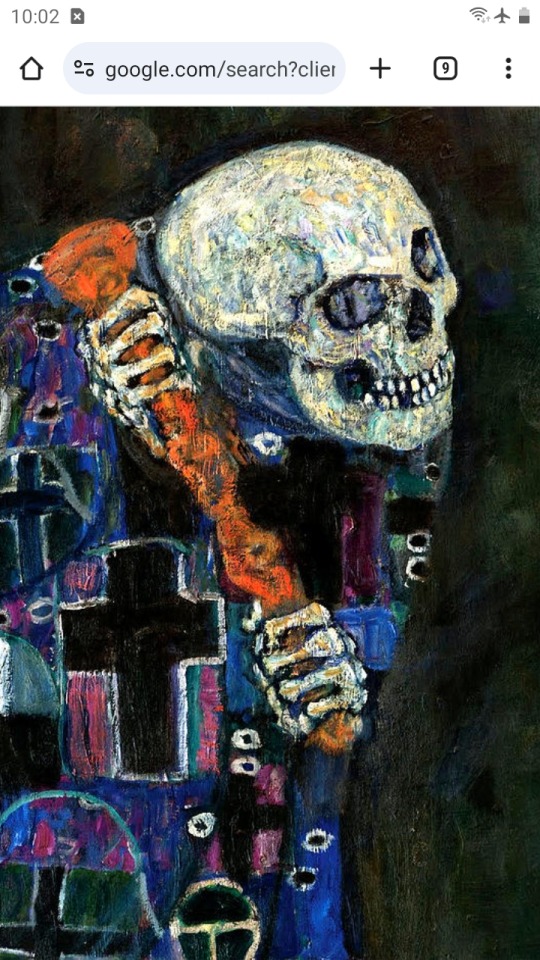
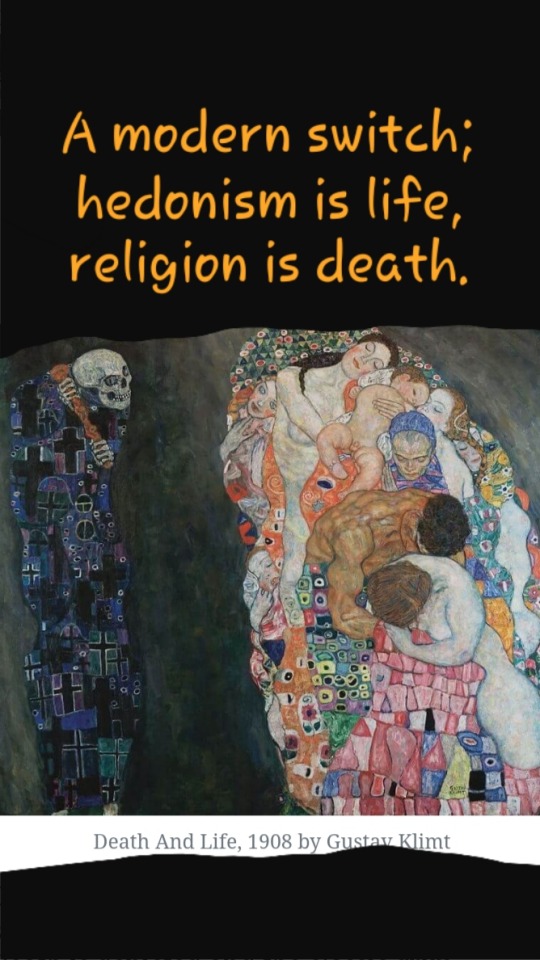
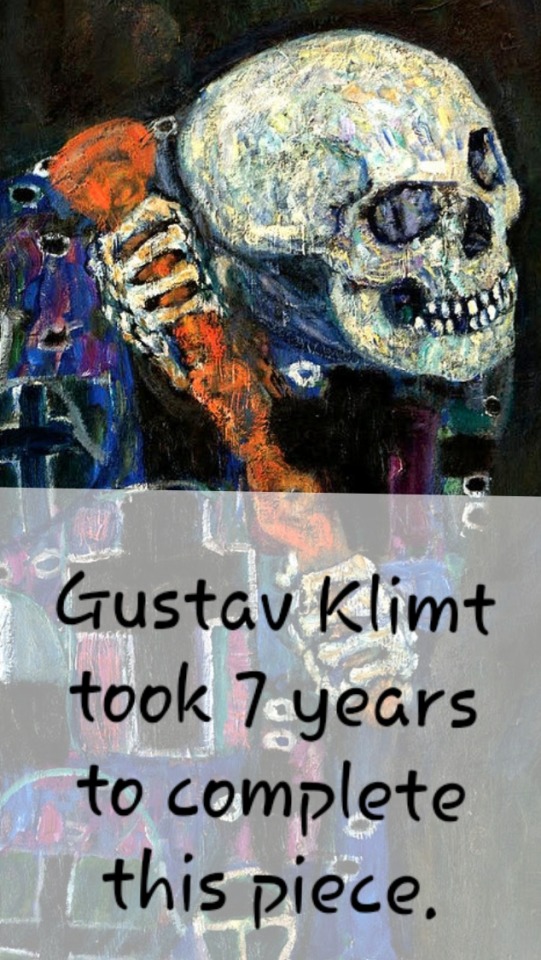

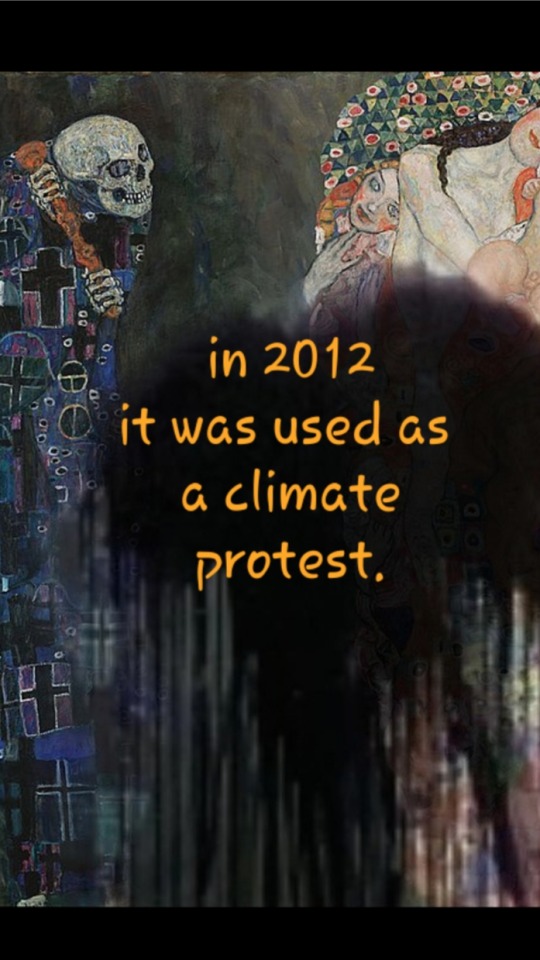
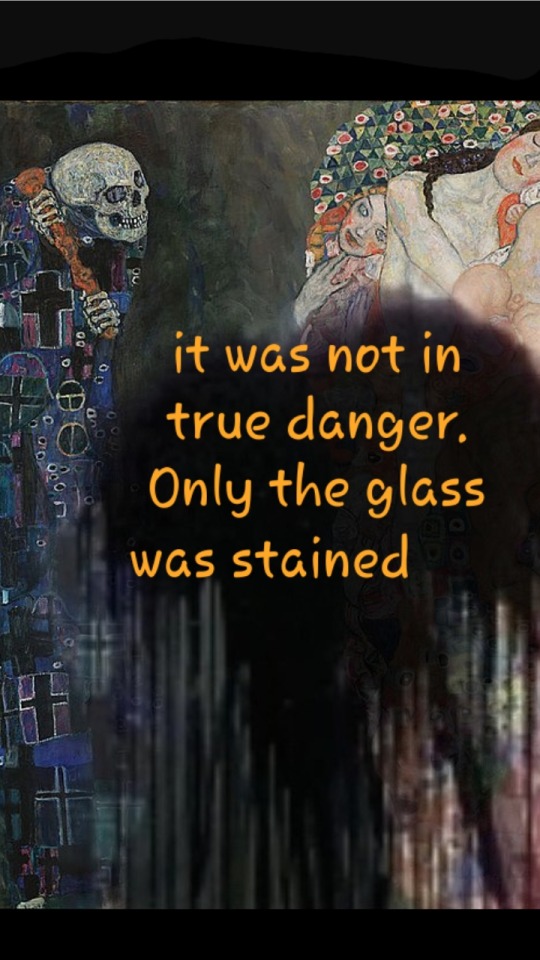
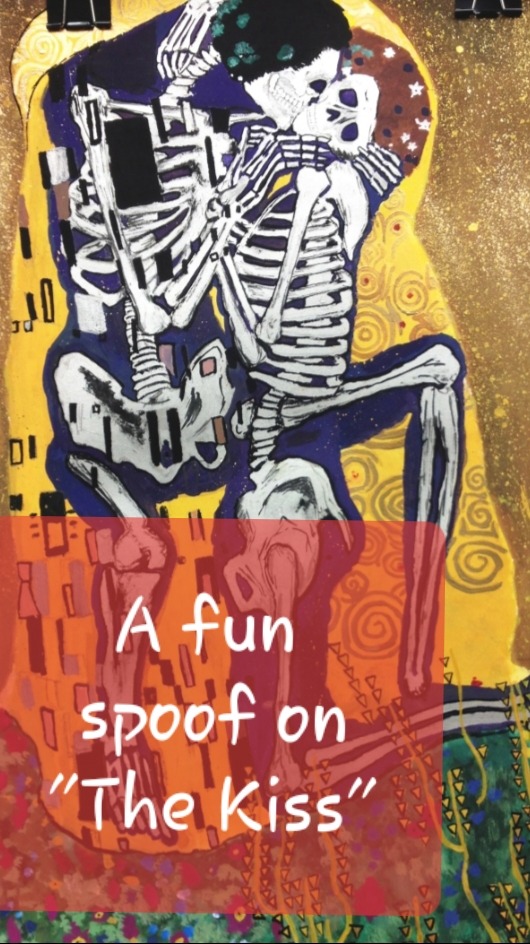

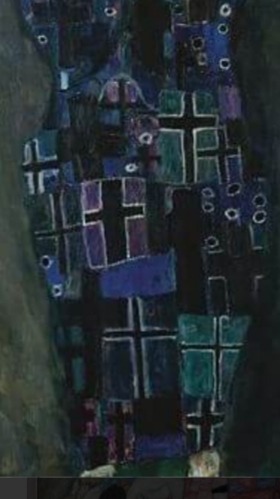
2 notes
·
View notes
Text
Mary and butterflies - the inevitability of death, murderous calling cards and collectors
Some ramblings with links to other people’s excellent meta, in which I suggest that butterflies (and/or moths) symbolize Mary as Moriarty’s reincarnation and or calling card, while also hint at her inevitable death.
Disclaimers: credits are below the cut. I’m not an expert in any of these topics. Thank you, @thewatsonbeekeepers for the beta. In this post I’ll be using moths and butterflies interchangeably, apologies to any entomologists.
Mary’s appearance in the show brings with it new imagery we haven’t seen prior to The Empty Hearse - butterflies. Once Mary’s in the picture, there are butterflies in some very strategic locations, all are either visually or subtextually leading to her. The show has done that previous to season 3; Moriarty is connected to some well established symbols like magpies, apples and IOUs.
When I first started reading meta I used to think these themes were a bit of a stretch, but I’ve since accepted that this is a show that puts barely noticeable phoenixes in a restaurant scene that shows us Sherlock rising from his death.
Here are some of the butterflies I spotted so far:

Butterflies (and in the case of this piece of meta, moth) symbolize most commonly resurrection, change and renewal. Behind the symbolism stands the transformation of a small, ungainly creature into something full-grown and unbound. In that case, in the simplest way, one could argue that butterflies were chosen to symbolize her because the ‘Mary Morstan’ persona was a stillborn’s identity that was stolen and used ‘reborn’ to create a new person.
But more than this simplistic idea; butterflies carry multiple symbolisms. When it comes to Sherlock, I and many others tend to look at Victorian symbolism, considering the detective’s Victorian roots.
I find the appearance of butterflies interesting in Mary’s context, much like I find the skull interesting in Sherlock’s. The skulls, in Sherlock’s case, serve plenty of purposes, but one of them is the idea of memento mori.
Memento mori (Latin for 'remember that you [have to] die') is an artistic or symbolic reminder of the inevitability of death. These are representations that can appear in any form of art such as paintings, literature, poetry etc. It’s a concept that existed in many ancient cultures but is also deeply rooted in early Christianity. It serves to remind people of the inevitable; that even if we choose to ignore it, not think about it, it’s always there lurking, and the purpose is not to scare us but to encourage us to make good use of our time when we’re alive.
Memento mori was the philosophy of reflecting on your own death as a form of spiritual improvement, and rejecting earthly vanities.
Victorians were obsessed with the concept (weren’t Victorians obsessed with everything?). They would take photographs of the dead and keep locks of hair of those who died in mourning brooches. It is said that they found these practices comforting.
Another expression of the ‘remember that you must die’ concept was vanitas art; vanitas is a symbolic work of art showing the transience of life, the futility of pleasure, and the certainty of death. The Latin noun vanitas (from the Latin adjective vanus 'empty') means 'emptiness', 'futility', or 'worthlessness', the traditional Christian view being that earthly goods and pursuits are transient and worthless. It alludes to Ecclesiastes 1:2; 12:8, where vanitas translates the Hebrew word hevel (הבל), which also includes the concept of transitoriness.
This concept reminds me, most especially, of the skull used in The Abominable Bride, which is actually Charles Allen Gilbert's 'All is Vanity' Illusion art.
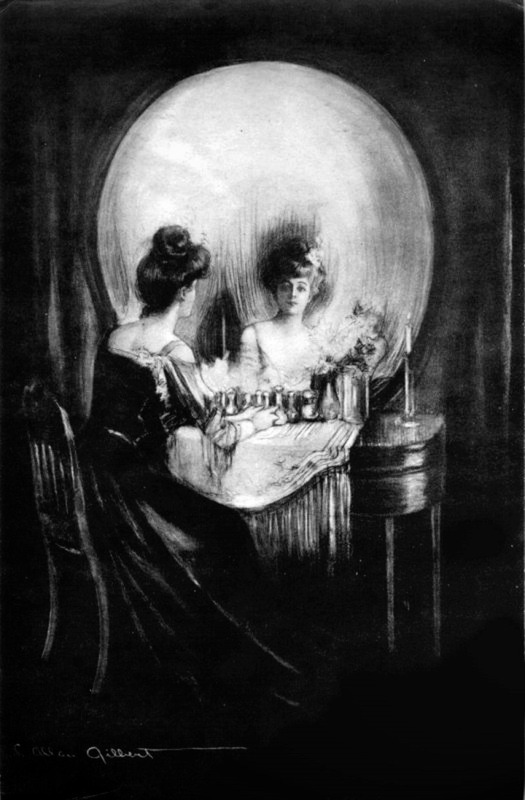
Back to butterflies - butterflies are a staple component of vanitas art - paintings executed in the vanitas style were meant to remind viewers of the transience of life, the futility of pleasure, and the certainty of death. They also provided a moral justification for painting attractive objects - in a way, it’s a justification for the vanity, or the human need of enjoyment of beautiful things. Below is a vanitas by Jan Sanders van Hemessen:

But butterflies are also considered an omen of death:
“Butterflies and moths were associated with death, sometimes merely as omens, sometimes as the soul or ghost.” These butterfly omens came in many ways. For example, in the nineteenth century United States, some people thought that a trio of butterflies was an omen of death.” [x]
Oh.

But I also think there’s more to the butterfly symbolism than Mary’s imminent death; I suggest that, in keeping with @loudest-subtext-in-tv M-Theory (suggesting that Mary was planted in John’s life by Moriarty), they symbolize Mary as Moriarty reincarnated following his death in TRF. That Moriarty had indeed not disappointed Sherlock - there was a posthumous game after all! That Sherlock was supposed to understand that while one form of Moriarty died on that roof, another had emerged, continuing the mission of burning Sherlock’s heart. Mary is Moriarty’s calling card, left behind in the crime scene. They’re different, but not separate, which is why Sherlock is so obsessed with Moriarty between HLV-T6T; he’s both wrong and correct at the same time.
So far, what I’ve suggested is that in Sherlock, skulls are Sherlock’s symbolic memento mori - the skulls are associated with Sherlock in some very significant ways.
However, Mary’s character was doomed from the start - she dies during Sherlock’s hiatus in ACD canon. I believe many fans assumed Sherlock’s Mary expected the same fate when she was introduced to the show. Although the story of Samarra is told by Sherlock, who expects his own death in T6T, Mary is the one who ends up dying.
Butterflies in ACD canon
Searching for the significance of butterflies in the ACD and BBC canon led me to a number of interesting directions in meta written by others.
The first and probably the best place to start is this meta post by @tendergingergirl, which I strongly suggest you read in full: Butterflies, Sexual Deviancy & The Bloodline Theory in The Hound of The Baskervilles.
Stapleton also has a hobby. He collects bugs…Butterflies, to be exact. This can often be seen as purely academic, but depending on the actions of the hobbyist, they can indicate more disturbing things. That of holding something vulnerable captive, treating it as your hostage, pinning it down. The torture of animals has come to be a good indicator of someone who would do this to a human. He had already shown callousness by laughing as he recounts to Holmes of ponies wandering onto the Moor, becoming trapped, and dying. In 1974, there was a release of a new edition of Sherlock Holmes stories, with the forward of The Hound of The Baskervilles written by British author, John Fowles. He is responsible for several well-known works, including The French Lieutenant’s Wife. Another, was a novel that Mason finds himself wondering why Fowles doesn’t mention in his introduction, since the villain is such a close parallel to Stapleton.(but as we have learned through the study of ACD, most writers will not come right out and say where they got their inspiration. They like for you to guess!)
A lonely young man, works as a clerk, and collects butterflies, becomes obsessed with a pretty young girl, Miranda, an art student. He chloroforms, and kidnaps her, taking her to his cellar basement, to add Miranda to his collection. That book was called The Collector. But what else does it sound like?
“So yes, I googled. From an article on the release of the movie’s Documentary. "The docu proves a poor reference point for anyone who wants to understand the literary and movie links for “Lambs.” There’s no mention, for example, of how Harris partly based the butterfly-loving Bill on John Fowles’ kidnapper in “The Collector” …And here I thought Mofftiss added allusions to Silence of The Lambs into Sherlock just for fun. SMH.”
@tendergingergirl also added this photo to their post:
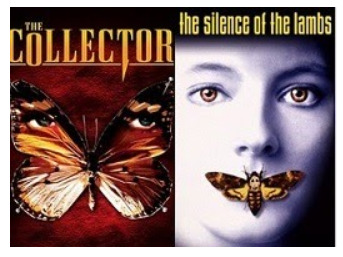
So what we have here is a chain of metatextualities/inspiration, starting with ACD’s THOB, where Jack Stapelton inspires a book about a disturbed butterfly collector (The Collector by John Fowles), which inspires a the author of Silence of the Lambs in creation of his character Buffalo Bill, a serial murderer who inserts a death's head moth into the victim's throat because he is fascinated by the insect's metamorphosis. Silence of the Lambs served as inspiration for Sherlock as analyzed by @garkgatiss in Bond, Hannibal, and Holmes (I suggest you read the whole Hannibal section) .
Let’s look again at some imagery from His Last Vow. Mary shoots Sherlock’s heart, essentially burning his heart out, and who does Sherlock meet in his Mind Palace in a very cocoon-like straightjacket? Yes, the dead dude who encourages him to die already (“one more push, and off you pop”).
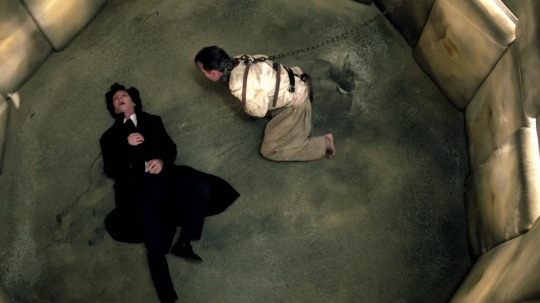
What’s the next thing we as an audience see once Sherlock opens his eyes? Mary coming to the hospital to hear that Sherlock had, in fact, survived. And what is she wearing? Her butterfly scarf, one which will another appearance later in the episode, during the tarmac scene.
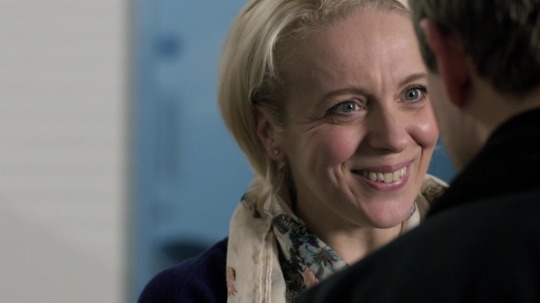
I also find it interesting that in the context of Sherlock and Silence of the Lamb, there’s an element of gender-switching between Moriarty and Mary. Buffalo Bill, the murderer from Silence of the Lambs, skins bodies of women to create himself a woman’s 'suit’; in Sherlock, Moriarty is a man-villain who transforms into a female-villain in the form of a bride and/or Mary.
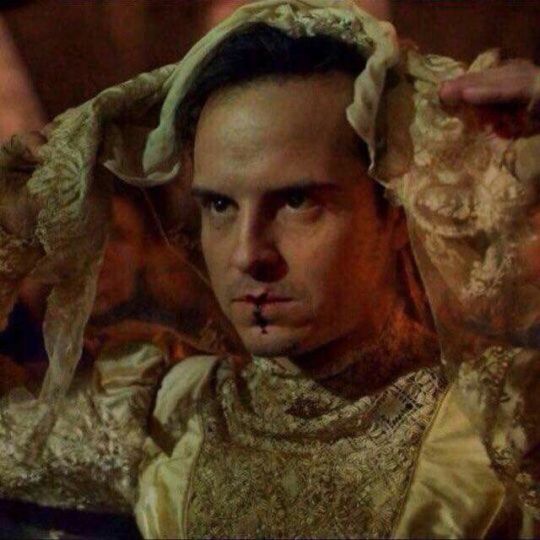
By the way, who else is obsessed with his suits?

Also, let’s not forget the worms, maggots and other such crawlers in the grave scene:

Now, let’s go over some of the photos I included in the beginning of this post a bit further.

Mrs. Hudson’s butterfly tea set is first shown in TEH - she uses it to serve John tea when he comes visiting her and tellis her about Mary. We also see it near John’s chair on the day of the wedding. This isn’t Sherlock’s set - his set is different, featuring the British Isles. Moriarty drinks from it in TRF. The next tea set we see, now that Moriarty is dead, is the butterflies one. In TLD, Mrs. Hudson uses Sherlock’s tea set - the butterflies are gone.

Mary’s bedroom wallpaper is very feminine, with flowers and butterflies, both complementing symbols while also very common in vanitas art. Much like Mrs. Hudson’s wallpaper in Baker Street, Mary’s wallpaper is supposed to show the contrast between Mary’s flat/Mary and Sherlock’s flat/Sherlock.

There’s an interesting moth reference in The Empty Hearse, which in my opinion, is Mary & Moriarty related. In short, in a previous piece of meta I wrote, I suggested that the Jack the Ripper case in TEH is subtext alluding to Mary’s skeletons, which Sherlock ignores because he’s upset by his reception by John. And what’s one of the first things Sherlock notices about the skeleton? New mothballs smell, hinting at an attempt to get rid of moth/butterflies - maybe a hint to the fact that Sherlock has a chance to discover the truth about Mary but misses it. Also, in the context of Mary and the Jack the Ripper case, notice this transition:
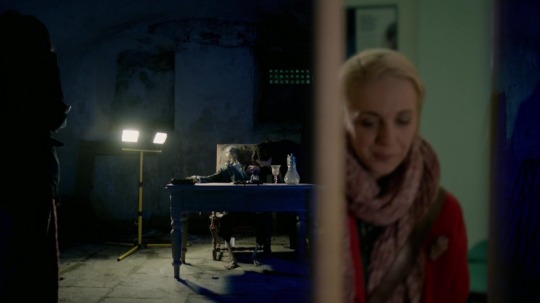
Transitions are important on Sherlock - they’re nearly always there to draw our attention.

This, I think, is perhaps the most telling about a possible connection between Mary and Moriarty: we have both magpies (a Moriarty hint) and butterflies together here. This isn’t the only hint of Mary’s past we get in the wedding; there is, after all, the telegram from CAM.
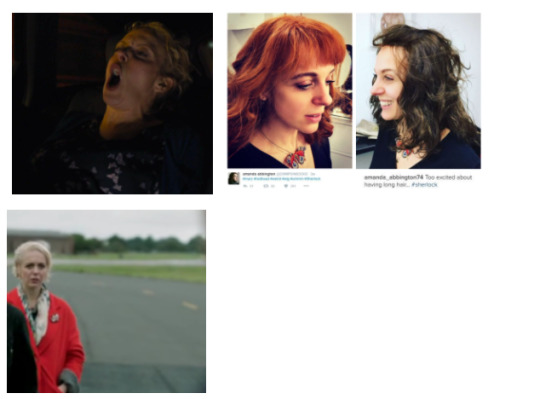
Mary’s scarf is colorful, and it appears by the time Sherlock’s subconscious suspects Mary. Mary’s black butterfly dress - an ominous dress, I’d say - is the one she wears during the labour scene in the car. The third photo is a behind the scenes photo uploaded by Amanda Abbington, although I’m unsure whether this necklace is AA’s or Mary’s (but I couldn’t pass on including this).
Interestingly, the butterflies do not appear in Rosie’s context - either because it’s a telling sign that Mary won’t be with us much longer, or because Rosie is spared being considered a part of the ‘burning Sherlock’s heart’ plan. Sherlock, on the surface, seems to love Rosie and accepts her.
Also, another BTS photograph I came across during my research which I’ve never seen before and ties nicely to the vanity topic is this one (found here):
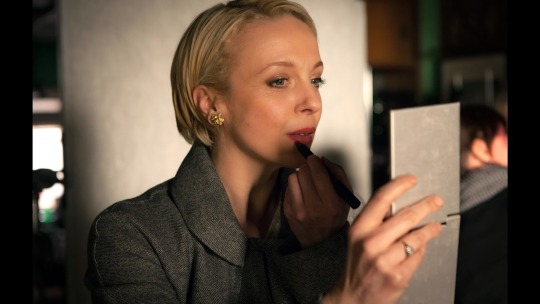
The Death's-head hawkmoth and ‘Death with Interruptions’
You’ll recall that I referenced The Collector and Silence of the Lambs, both featuring butterflies on their cover art.

The Silence of the Lambs cover features Acherontia atropos, otherwise known as the death's-head hawkmoth. It gets its name from the sinister-looking skull shape on its back. In many cultures it is thought to be an omen of death. In a bit of another coincidental but stunning piece of symbolism, all three species of the Death's-head hawkmoth are commonly observed raiding beehives of different species of honey bee; A. atropos only invades colonies of the well-known western honey bee, Apis mellifera, and feeds on both nectar and honey. They can move about in hives without being disturbed because they mimic the scent of the bees and are not recognised as intruders.

Anyway, the use of Acherontia atropos reminded me of the book ‘Death with Interruptions’ by Jose Saramago. Interestingly, this is another book about a deathly collector with a butterfly on the cover:

In Death with Interruptions death is a woman, and she falls in love with one of her future victims. She decides to spare his life: Every time death sends him his letter [notifying him of his imminent death], it gets returned. death discovers that, without reason, this man has mistakenly not been killed. Although originally intending merely to analyse this man and discover why he is unique, death eventually becomes infatuated with him, so much so that she takes on human form to meet him. Upon visiting the cellist, she plans to personally give him the letter; instead, she falls in love with him, and, by doing so, she becomes even more human-like.
It’s pretty common to read theories about Mary who maybe was one of the assassins due to kill John both at the pool and in front of Barts. So we have a death harbinger trying to kill someone twice and failing. She then falls in love with him.
But how does the butterfly fit in?
Well, at some point in the story, death (that’s her name, sans a capital d), contemplates that using the death head butterfly, instead of a violet piece of paper, would have sent a much stronger message to those whose death is coming for.
And here’s another last bit of coincidental reference to Sherlock: I’d argue shades of purple, among them shades of violet, are associated with Mary and her secrets. There’s the purple dress she wears in TEH, her bridesmaids’ dresses include various shades of purple (including what I would argue was a violet sash) and let’s not forget:
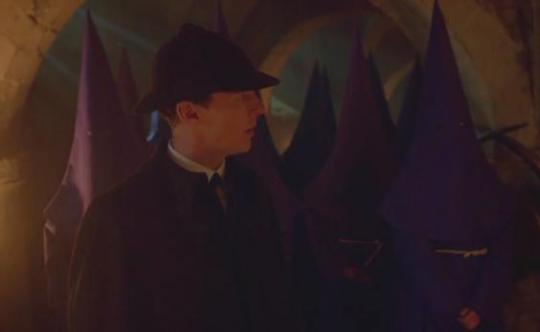
Oh and, by the way, remember the song Donde Estas, Yolanda from TEH, about a woman called Yolanda? Always thought it was a bit of an odd choice for a song?
Yolanda is a female given name, of Greek origin, meaning Violet.
:)
Thoughts?
Credits: thank you @lukessense for directing me to @tendergingergirl meta about butterflies. Episode screenshots are from kissthemgoodbye.net.
@sarahthecoat @tjlcisthenewsexy @devoursjohnlock @inevitably-johnlocked @shylockgnomes @possiblyimbiassed @raggedyblue @ebaeschnbliah @gosherlocked @waitedforgarridebs @helloliriels
#mary mosrtan#butterflies#silence of the lambs#the collector#meta#sherlock meta#tjlc#johnlockendgame#jim moriarty
88 notes
·
View notes
Text
Frozen II is C A T H O L I C
Frozen II spoilers below.

I saw Frozen II a few days ago, and I was very impressed. I understand why some people did not like it; the four elements theme has been done countless times before. The songs, while often musically impressive and a great way to showcase Idina’s voice, were not as poetic or thematically rich as those in the first film. The expository dialogue was also rather weak, certain things like the mothers scarf - “I know you’re stressed out because you’re wearing Mother’s scarf” - were introduced to the plot somewhat uncreatively.
That said, it was an excellent story that stood its own. Frozen II was able to be so good because it explored a separate part of the story and of the characters that was not explored in the first film. It built on the development that Elsa and Anna experienced six years prior without doing too much along the lines of retconning in some unexplored part of each character.
Also, I was very pleased that the film seems to be extremely deliberately Catholic.
Before I move into the heavy hitters, here’s a few Catholic themes I noticed:
During Kristoff’s third attempt to propose to Anna, he gets caught in his own words and keeps repeating “well, we eventually will die, we will die one day!” It was intended to be a funny bit of dialogue as he stumbles around trying to say what he truly wants to say, but I thought it was also a nice nod to the Catholic theme of memento mori, and clued me into the Catholicism throughout.
Speaking of Kristoff, his anguish surrounding his love of Anna was evocative of a lot of Catholic thought. Particularly in his song, he speaks of his fears that the two are growing apart. For me, it really displayed the philosophy of love as a choice and an active decision, rather than as a feeling that comes and goes.
Kristoff also reminds me a lot of St. Joseph. He’s the man in the little family who also happens to be the least central part of the narrative, but he loves Anna with all his heart and he loves Elsa like a sister. He is the one who loads up the cart and puts his family on the road to go a far distance for the story to begin once Elsa receives her call. He displays especially Josephan levels of virtuous trust and obedience at the very end, when Anna is being chased by the earth giants and he saves her, asking “where do you need to go?” When she tells him that they need to destroy the dam, he responds only with “You got it,” and does everything in his power to make it happen, even though he was the one to originally notice that the destruction of the dam means the destruction of Arandelle. Not only this, but he loves and trusts Anna so much that he willingly puts her into mortal danger at her request, because he believes that she knows what the right thing to do is, even if that means the sacrifice of her life for her, and the sacrifice of his beloved for Kristoff.
Olaf is a character that exhibits the childlike innocence and joy exhorted by Jesus in the gospels and illuminated by the writings of St. Therese of Lisieux. Olaf is carefree and does respect and revere adults (even wishing to have some of their wisdom and courage, as he explains in his song), but he has this littleness about him where he can just enjoy his life that he knows he has been blessed with. In both Frozen and Frozen II, despite his apparent immaturity he knows his exact place and purpose, which is to love, and he accepts his own death with such beautiful grace because he knows he has done what he was made for, and he is happy.
During Elsa’s first song, Into the Unknown, she talks consistently about this calling to adventure that she has, but an unwillingness to follow it. She, like the rich young man in the Gospels (Matthew 19:16-28, Mark 10:17-31, Luke 18:18-30), has all that she has ever wanted, and she has had her own great conversion in the past. She lives a good life, and rules her kingdom with justice and righteousness, but there is still something more, something that she was created for. A call from God that she could not reject, and it continued to call her like a voice in the night until she set off to do what she was created to do. This can also be an allegory for discernment of the priesthood.
Original Sin
“The harmony in which they had found themselves, thanks to original justice, is now destroyed: the control of the soul’s spiritual faculties over the body is shattered, the union of man and woman is subject to tensions ... Harmony with creation is broken: visible creation has become alien and hostile to man.” (CCC 400).
Much like the fall of Adam, the betrayal of Elsa’s grandfather left three major ruptures: between man and nature (now Gale, the fire salamander, the water horse, and the earth giants are at odds with the people, wreaking havoc and attacking on sight until each are subdued by Elsa), between man and woman or man and other men (the Arandellians and the northern people are at war with each other; those who are trapped in the forest together remain at war with one another through all thirty-four years, until Elsa comes to unify them), and between man and himself, causing him to die (as Grandfather was killed in the very battle he started to create the disuinity, it can also be seen as manifested by Elsa’s lack of control over her power in the first film).
Each of these ruptures had to be rectified by Elsa, the film’s Christ figure. Elsa was the only one who was able to tame the four elemental spirits. Elsa, who was fully man and fully divine, an incarnation of the fifth elemental spirit.
Elsa and the Fifth Spirit
Elsa, with her dual nature, was destined to heal the sin of her grandfather, and to bridge the gap between humans and nature. She could do so because she was a human, and could therefore represent the humans to see their sins, and she could sufficiently approach the spirit of nature because she was the incarnate form of the spirit. She had to be both, just like Jesus had to be both.
We have already known that Elsa was a Christ figure since the first film, where she ran across the water, but this film solidified it with her death and resurrection. When she went into the chamber of the fifth element (literally jumping into an abyss), she saw all of the sins of man, most principally those of her grandfather. Just as in the garden of Gethsemane Jesus experienced all sin since the sin of Adam and reversed it by giving his life, Elsa was able to enable the reversal of her grandfather’s sin only through her own death. (Her death was a participation in the same death Anna went through in the first movie, a death due to a frozen heart. This is evocative of imagery of stony hearts in Ezekiel 36:26, which God will remove and replace with natural hearts).
It is also significant that Elsa is the descendant of the man whose sin put everyone in this mess; Luke makes sure to let us know that Jesus was a descendant of Adam so that his sin could be truly reversed (Luke 3:23-38). Elsa is also the descendant of her father, the good king, destined, then, to rule Arandelle - just as Jesus was the descendant of David and destined to rule Israel, as emphasized by Matthew (Matthew 1:1-17).
Elsa is ontologically a Creator, as shown when Olaf, her creation, is clearly contingent upon her since he cannot exist in her absence.
The fifth spirit has much of the same imagery as God. It abides in a place inaccessible to man (which people attempt to reach but cannot; they instead die trying as in the Tower of Babel) but, we see during Elsa’s Show Yourself that this abode is a palace much like Elsa’s that she built for herself. This is the residence of a king, but which no human can enter, like the Holy of Holies.
In this place, Elsa’s clothing becomes bright white and she sees (and kind of converses) with her dead mother (who herself was pleasing to the Fifth Spirit after an act of love). It is reminiscent of the Transfiguration, when Jesus’s “clothes became white as the light” (Matthew 17:2) and he spoke with Moses and Elijah.
The Fifth Spirit always appears as a fractal pattern, as the centerpiece surrounded by the four spirits:

which is evocative of apocalyptic imagery of God as seen in Ezekiel 1 and Revelation 4, as He is always accompanied by the four Seraphim, the four “living creatures.”

After Elsa experiences her resurrection, she is seen by the entirety of Arandelle saving the entire kingdom from the tidal wave, dispersing the water (which is Biblically a symbol of primordial chaos), and then returning to the north, where it is said that “she belongs,” where she is in communion with the spirits from whence she came. However, she is still present to Arandelle, returning for charades, and is still their queen (although Anna has taken over the office).
So, too, did Jesus ascend into Heaven, although He remains present with us.
Anna is the Pope
The most Catholic thing of the movie after Elsa’s Christ journey is the clear imagery of the Church at the end. For most of the film, Elsa and Anna’s relationship is characterized by a sense of Anna saying “where are you going?” and Elsa saying “Where I am going, you cannot follow me now,” and Anna replying with “why can’t I follow you now? I will lay down my life for you” (these are are pretty close to the actual dialogue of the movie but these are exact quotes from John 13:36-38, an exchange between Jesus and Peter).
Additionally, at the end there is a moment where Elsa is seen riding across the water in the distance and Anna spies her and runs to meet her, you’re almost certain Anna is going to jump into the water and try to run out to her like Peter did in Matthew 14:22-33, but it cuts so that Elsa reaches the shore when Anna does.
Anna is also the first person to verbally say that Elsa is one and the same with the Fifth Spirit, just as Peter is the first to vocalize the fact that Jesus is the Son of God.
Elsa and Anna speak of this “bridge” metaphor, where “a bridge has two sides.” Elsa is the mediator between the north and Arandelle (Jesus is the mediator between God and man) but Elsa belongs in nature, and needs a representative to guide Arandelle in her name. She specifically picks Anna for this task, as Jesus specifically picks Peter as the rock upon which he builds His Church. “Pontifex,” a title for the Pope, means “bridge builder.”
Like the Church on Earth, Jesus is still present and guides the Magisterium in shepherding the flock. At the end of Frozen II, we see Anna sending messages in the wind (much like the flow of incense) to her Queen. They maintain a relationship of friendship and sisterhood, as well as deep respect.
8 notes
·
View notes
Text
Words to make you think
This post is part of the TSU. It belongs to the third part: Socio-political reflection.
There will be several parts in this post:
Citations in the videos
In the lyrics
Concepts based on philosophy/psychology
BTS’ discography through a Jungian perspective
Citations in the videos
We’ll start with what’s mainly a list of the quotes then we’ll interpret their purpose. Some citations may not feel that philosophical but as they can be interpreted the same way, they were included here nonetheless.
BTS introduced us to philosophy, and then to psychology, quite progressively. As it started in the background, it’s hard to be sure whether I caught them all or not but the earliest occurrence I have is in “Boy In Luv” Japanese version MV:
“One original thought is worth a thousand mindless quotings, Diogenes”
Despite the signature, it seems this quote is not from Diogenes himself but was rather attributed to him by William Safire in a New York Times article from the 7 April 1996 and titled “ON LANGUAGE; Worth a Thousand Words” - the article itself is explaining the real origin of some expressions.
It was later used by Banksy for one of his works - and it’s probably this one that inspired Big Hit’s artistic directors.

It’s funny to start a post about philosophical references with a fake quote. Let’s say it’s a reminder to be careful with what you say and to not blindly believe what you read.
The sentence was written on the blackboard. You can also find a verse from the Bible’s proverbs not too far away:
“Those who guard their lips preserve their lives, but those who speak rashly will come to ruin.”
Now let’s be honest, it’s impossible to read these in the MV (I found them thanks to a making-of video). As for their link with “Boy In Luv” (lyrics of the Japanese version here), it seems hard to establish. “Boy In Luv” tells the story of a boy struggling to confess his love for a girl and waiting eagerly for an answer. An overinterpretation of the quotes could be that the boy needs to find how to confess by himself (in opposition to the “Dad how did you confess your love to mom?” from the lyrics) and that a gesture would mean more than a verbal confession, or that he must choose his words wisely to not lose his chance with the girl.
The next ones are more known in the fandom since they appeared during The Most Beautiful Moment in Life. It’s words related to the concept of the series, namely the brevity of life, the death of innocence and childhood, and the cruelty of the world:
“Paradise is where I am” - Voltaire in “Le Mondain”
“Dedicated to all the boys who have lived in this painful world”
“Too fast to live too young to die”
“Without soul goal and ****
We are nothin but a mannequin”
"You must live on"
“YOLO” / “you only live once”
“Youth is never coming back”
“Pain past is pleasure”
There’s also a series of Latin citations that appeared in “RUN” Japanese version:
“Carpe Diem” (Seize the day)
“Dum Spiro Spero” (While I breath I hope)
“Memento mori” (Remember that you have to die)
“Pro Memoria” (For memory)
“res, non verba” (Facts instead of words)
“Viva” (Alive/Living or Long live…!)
Some of those expressions made their comeback during the WINGS series, along with new ones:
“Man muss noch Chaos in sich haben, um einen tanzenden Stern gebären zu können”
(One must still have chaos in oneself to be able to give birth to a dancing star.)
A citation from Nietzsche’s Thus Spoke Zarathustra. And:
“You oldest fears are the worst ones”
“Expiring for love is beautiful but stupid”
“Fear is the most elegant weapon
Your hands are never messy
Threatning bodily is rude” (original typo)
Different sentences from Jenny Holzer.
These citations are once again fitting with the concepts for WINGS and The Wings Tour, that is to say, temptation and the fear of becoming an adult.
For details about where all those can be found in BTS’ works and their origins, I’ll let you refer to the glossary. Most of them don’t have a real author and some may even have been created by the artistic direction team.
Agust D’s album cover had citations over Suga’s face:
“You need people like me. You need people like me so you can point your fuckin’ fingers and say. ‘That’s the bad guy’.” said by Tony Montana (Robert de Niro), the main character in Brian de Palma’s movie Scarface.
“Life is a daily oscillation between revolt and submission” by Henri Frederic Amiel, a Swiss philosopher.
“Life is ecstasy”
“Every man dies, but not every man lives.” pronounced by William Wallace (Mel Gibson) in the movie Braveheart.
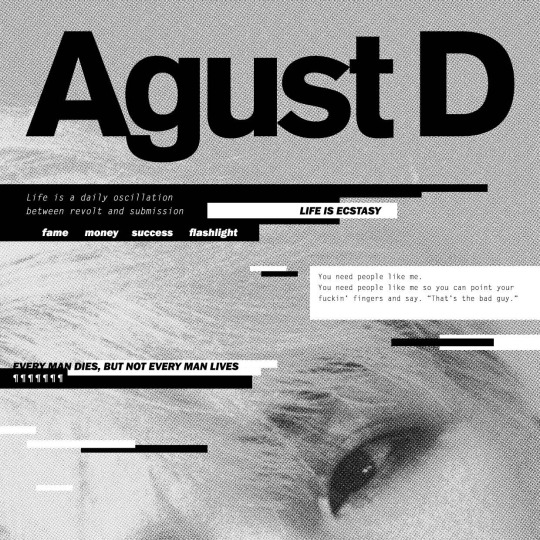
Again they go with the theme of the mixtape.
We even got a surprise during the 2017/2018 ceremonies. A citation from Gilles Deleuze could be seen in the background during the “Mic Drop” performance at the 2018 Seoul Music Awards. There was also a lobster during the Golden Disc that connects with it. I’ll let you refer to the glossary for details but here’s the quote, from A Thousand Plateaus:
“Nor can the status of social formations be analyzed by throwing some signifier into the base, or vice versa, or a bit of phallus or castration into political economy, or a bit of economics or politics into psychoanalysis.
There is a third problem. It is difficult to elucidate the system of the strata without seeming to introduce a kind of cosmic or even spiritual evolution from one to the other, as if they were arranged in stages and ascended degrees of perfection.”
I won’t pretend I understand everything but I still feel it’s the less pertinent quote until now. It’s an analysis of the world on a binary base which doesn’t really connect with the boys’ success that’s celebrated in “Mic Drop”.
The last quotes up to this day are in Persona’s comeback trailer. They’re from Carl Jung, the psychologist who inspired the series:
I am not what happened to me, I am what I choose to become.
The dream is the small hidden door in the deepest and most intimate sanctum of the soul, which opens up to that primeval cosmic night that was the soul long before there was the conscious ego.
As expected, they relate to the lyrics of “Intro: Persona” that wonder about one’s own identity and the dream theme linked to the album.
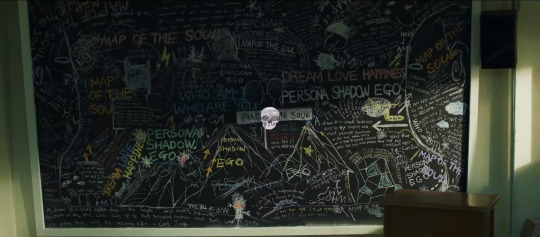
Even though they are mostly related to the concept of the series, we can wonder whether these words are intended to be seen by fans or just serve as a Lorem Ipsum to fill the background. Indeed, you’ll need to pause the videos to read most of them and sometimes even more effort will be needed - for example, Holzer’s quotes are written backward when they appear behind Jungkook.
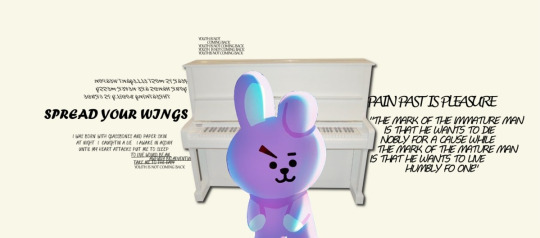
(This also applies to most of the literature references, they’re relevant for the concept but quite hard to catch.)
It’s like background noise. But a background noise that you can take the time to listen to in order to understand the whole concept even better. There’s one thing however that seems recurrent between those quotes and it’s their negativity. Of course, most of BTS’ concepts are dark so it’s fitting but they also usually have their bit of hope: youth is painful but it’s the most beautiful moment in life.
Or then again, we can overinterpret and consider that while the world is dark, it’s the boys themselves who bring hopefulness.
In the lyrics
Obviously, all of BTS’ lyrics are quite philosophical, be it when they question their feelings, the meaning of life or the way society works. And I’m not even talking about the puns.
One notable line though is in RM’s “God Rap” when he explicitly talks about Buddhism, as explained by Muish here:
Foolish believers, you can become a god as well
It references the fact anyone reaching enlightenment can become a godly being.
The next ones appear in the Love Yourself series. First, we have “Magic Shop” (Muish’s rambling), a song dedicated to ARMY and written by Jungkook. The concept of the magic shop is detailed below. Here, it’s like an IRL version. The fear they exchanged is the hate they received before and the positive attitude they gained is ARMY. And they wish us the same:
You gave me the best of me
So you’ll give you the best of you
Since the magic shop is a mental exercise, you’ll find it in your heart.
There’s also something in “134340” and “Answer: Love Myself”. Their lyrics can be connected to what Jung defined as a complex: a constellation of elements that when they’re activated can influence our will (more details can be found here). Those elements are usually past trauma or similar events.
So when they say in “Answer: Love Myself”:
Under your mask
When even the scars left from my mistakes
Are all my constellations
The constellations that emerged from mistakes can be seen as a complex.
As for “134340″ (lyrics), the whole song can be interpreted as a rejected complex. “134340″ is initially about Pluto not being considered as a planet anymore and thus feeling lonely. It’s similar to what happens to complexes. Normally they’re in the unconscious but once they’re activated, they can reach the consciousness, like the sun in the lyrics:
At one time, belonging to the sun’s world
But once the ego has dealt with the complex, it is sent back into the unconscious, where it just float around aimlessly like Pluto:
All I’m doing is circling around
(Beyond the fog, I watch over the you who is still smiling
Without you and without meaning, the reality of my irregular orbit)
All I’m doing is spinning around aimlessly
(Pluto in the darkness with a number that’s difficult for you to remember
But even then, I’d continue to circle around your surroundings, damn)
To relate to the concept of Tear, let’s add the fact that complexes have personalities. They’re usually weaker than the personality of the ego (which is our personality; in the case they’re as strong, we observe multiple personalities disorders).
The whole concept of Tear is faking yourself to the point it’s unbearably painful. It’s like the boy rejected his own personality to the point it became a complex instead of his own ego and now it’s exiled in his subconscious. Luckily, he will accept it in Love Yourself 結 Answer. Concerning the reason why such a thing would happen, we have to remember the ego is directly under the influence of the persona (so how we behave in society). So to fit in the world, the ego changed itself.
Concepts based on philosophy/psychology
Until now, it’s safe to assume all the quotes in the videos were decisions from the artistic team only. It all changed with the Love Yourself series.
Not only its main reference is The Art of Loving by Erich Fromm, but the whole series is constructed as a reflection based on the 起承轉結 structure and it also references the magic shop technique. Philosophy is central in this concept and not only the artistic directors but also Bang PD and the boys are participating in developing it.
The Art of Loving explains love is like an art and you must work on it to develop it. Love has several forms, including self-love, but true love is rare nowadays. People tend to compensate for the lack of love with consumerism.
The Chinese structure has an introduction, two parts considering the subject from two different points of view and a conclusion.
The magic shop refers to a psychodramatic scene performed during therapy by the patients and the therapist. In the magic shop, it’s possible to exchange whatever you want against a certain price. However, the real strength of this technique is in the bargain preceding the exchange. The shopkeeper (either the therapist or another patient) will question the reasons motivating the exchange and through their answers, the patient often realizes their initial wish was hiding another desire they hadn’t identified. You can refer to this paper by Professor Earl Koile for examples.
In Love Yourself, Euphoria shows that the introduction is actually The Most Beautiful Moment in Life. It’s the initial situation. As we saw in The universal coming-of-age story, the boys struggled with accepting the outside world and still had to find how to be happy.
The two development parts of the reasoning are the bargain inside the magic shop - note that all the what-if considered during this bargain also exist in the BU thanks to the time travel.
The exchange the boys want to make is revealed in ”FAKE LOVE” first teaser:
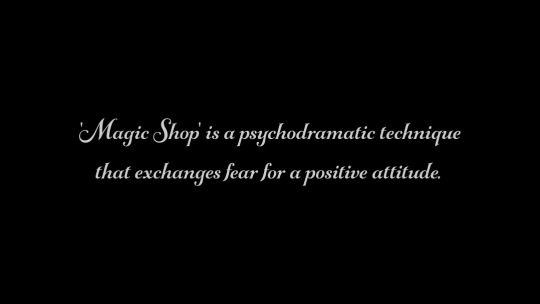
'Magic Shop' is a psychodramatic technique that exchanges fear for a positive attitude.
We also see in the video that what they understand by fear is their traumatic past and that “a positive attitude” is being with a girl (several interpretations can be made as to what the girls represent).
The bargain begins in Her and the boys explain how being with a girl will bring them happiness because it’s destiny (see notably “Serendipity”’s and “DNA”’s lyrics).
The teaser revealed during the 2017 KBS Gayo Daechukje can be considered as the shopkeeper’ answer:
“The magical time is coming.
Come to the Magic Shop.
Now, take off your mask and
open your eyes.”
The boys are asked to take off the mask “destiny” had put on them, the one that makes them smile because they’re with a girl.
We see the result in Tear. They’ve been denaturing themselves to the point they literally ask “who are you?” in “FAKE LOVE”. Being with a girl actually doesn’t bring them happiness and they’re just forcing themselves to fit the situation “because it’s destiny”.
The conclusion happens when the boys realize what they really want is not “a positive attitude” as decided by some abstract authority but to be happy by themselves and for themselves. Thus “Answer: Love Myself”. This whole reflection proves the ideas developed in The Art of Loving: the boys had to do a lot of mental work to reach true love, they all had different relationships with the girls and with themselves, and they had to work on it themselves and not just wait for someone else to bring them joy.
As the 起承轉結 structure is for a written work and the magic shop technique is a purely mental exercise, we can assume no one was really hurt in the process - no girls were involved and the boys didn’t denature themselves. Again this idea is made possible in the BU through time travel - but since it’s the BU, there are still people who are hurt, sadly.
However, the VCRs shown during the performances at the 2018 year-end ceremonies imply there was someone who helped them and that they want to help back:
“Fake Love
Take off the mask and face yourself
I can be your hero”
(2018 MMA)
“I didn't know what power/love is
but you taught me
how to use power/love”
(2018 MAMA in Japan)
“You gave me power.
You gave me love
So now I'm a hero
So now I'm a boy with love
I'll show you the map of the soul
I'll show you the dream”
(2018 MAMA in Hong-Kong)
It’s hard to tell who is that “you”. It can be the girl from the Love Yourself reflection but it can also be ARMY since we’re the subject of the next album, Map of the Soul Persona. Something that should be considered here too is that these VCRs were shown with songs from Tear (”FAKE LOVE”, “Airplane Pt.2″, and “Anpanman”) so rather than a teaser for Persona, they could be a development of Tear’s concept - except the last one of course. The masks and the doll concept were also most likely a complement to Tear - obviously the doll concept references the E version of Answer, but it’s a repackage including songs from Tear.
The series following Love Yourself is this time based on psychology, and more specifically on Jung’s works through references to Dr. Murray Stein’s Jung’s Map of the Soul.
At the moment it’s hard to know where they’re heading with this one as we only have one album. However, based on the graffitis in Persona’s Comeback trailer, we can assume the Map of the Soul series will be a trilogy made of Persona, Shadow, and Ego. These three parts of the psyche are tightly connected. The ego is the conscious and controllable part of our mind, the persona is the mask we wear to adapt to society and be able to live as a community, and the shadow is all the traits that were rejected from the persona. I detailed more ideas from the book in this summary.
If we go with such a trilogy, it means we won’t go deep in the psyche (to the self) and rather explore the surface (consciousness and personal unconscious).
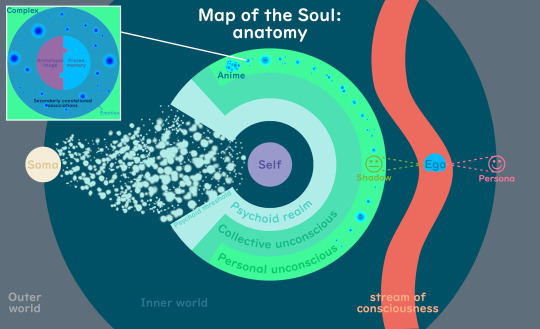
Persona is the first part of this series. RM explained in his Vlive about the album that BTS’ persona is ARMY - and we do often represent them where we are. Most songs are about happiness and love: thanks to their persona, the boys could fit in the world and enjoy it at best. We can also mention “소우주” (Mikrokosmos) and its lyrics about everyone being a galaxy made of stars - the galaxy is also one of the metaphors used to represent the map of the soul.
BTS’ discography through a Jungian perspective
Before we start this part, please keep in mind it is an interpretation following the different releases so I’ll obviously make sure it makes sense. This, however, doesn’t imply Big Hit planned it, I’m just adapting to what we have. Also, had the last series been about another psychologist’s works, I would’ve made this interpretation based on this psychologist’s theories.
According to Jung, the psyche is something that grows along with the body. At first, there’s an undefined mass that’s both the self and the rest of the world. Progressively, through experiences and trauma, an ego develops - accompanied by a persona and a shadow. These allow the individual to differentiate themselves from the outside world. However, it creates a conflict within the being between the different parts that all have different goals: the persona wants to fit in the world, the ego wants to be an independent individual. An ultimate stage would thus be for all those part to become one again while remaining differentiated. But most people don’t reach it.
Jung conceived this development as 5 different stages of consciousness. As the details get quite complicated I’ll let you refer to the book if you want to know more.
In BTS’s discography, we can link the development of the ego with the school trilogy. Through encountering the three main themes of life (dream, happiness, and love) the boys gain morals: you don’t need a dream, don’t be late to be happy, love is complicated.
As for their social behavior, it is at first shaped by society (the teacher in “N.O”, the director and the other teacher in BTS Begins): they’re told to obey authority, to aim for a stable job and to create a family.
In the first stage, the consciousness tries to connect with the outside world to begin its existence. And indeed, the boys obey at first...
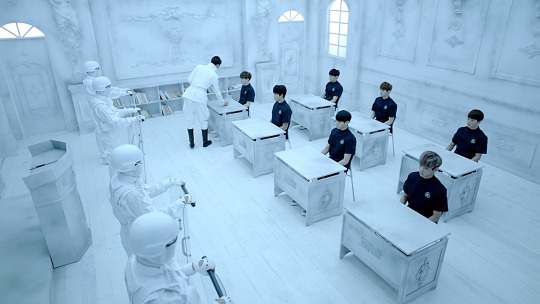
Before quickly revolting in the second stage, as they realize they’re different from the outside world
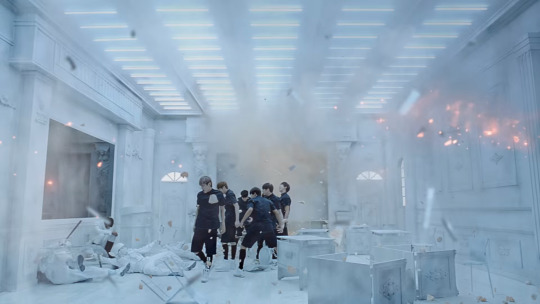
On the third stage, the perception of the world changes, the individual focuses more on concepts than objects. Which fits quite well with the YOLO and oniric philosophy behind The Most Beautiful Moment in Life.
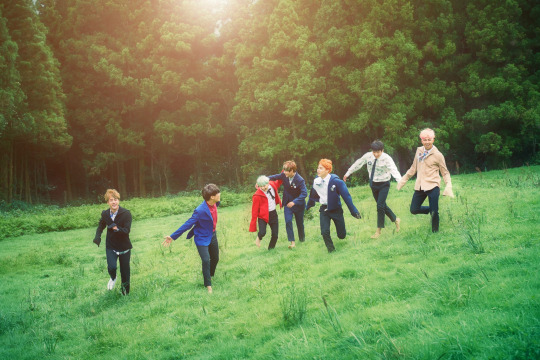
Since WINGS is based on Demian and Demian is based on Jung’s works, there’s obviously a lot of connections. WINGS references the whole book but especially the end, with the idea of the bird flying to the god Abraxas. This image is most likely the ego getting inflated in the fourth stage and identifying with god. It’s also a stage of realism where we realize everything is a social construct.
In BTS’ concept, the bird is the young being accepting adulthood. However, rather than identifying with gods, it seems the boys rather related to angels/Icarus and thus to the whole notion of falling from the sky/sinning/succumbing to temptation. An interesting take we find in the WINGS Concept Book is that the fall of the angels and their rebellion against God is a step to grow up - possibly to grow into god themselves then, considering the stage of consciousness.

In the Love Yourself series, a lot of people have associated the girls with the anima of the boys. In Jung’s works, the anima is like your other half, the one who completes you and who exists in your subconscious. This interpretation has flaws but it’s still possible. It also fits with the fifth stage since it’s the one where all the different parts of the psyche reunite. Considering the concept of the series, we can interpret the different parts reuniting as the being finding inner peace and thus being able to love themselves.
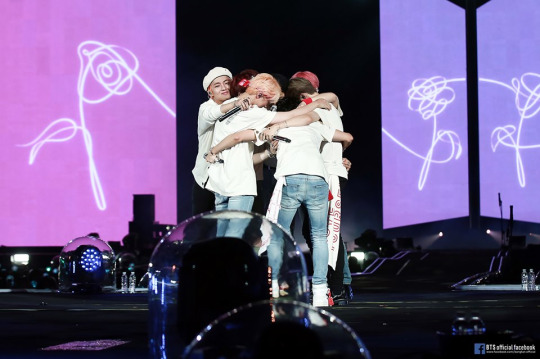
Hypothetically, the 5 stages of consciousness stop here but Jung considered supplementary ones. It’s just that only a very small number of people reach it so it can’t be studied well.
But it doesn’t look like Map of the Soul will head here. As I said above, it seems they will rather explore the surface. Interestingly, the surface of the psyche is central in the first stages of consciousness. And the first stages of consciousness have been explored in the school trilogy. And Map of the Soul just happens to revisit the themes of the school trilogy.
And just like that, we connected the whole Reflection of Youth to Jungian ideas~
Now just for fun, here’s another one:
At first, the world population is just a mass
Out of it emerges the BTS self
Through a trauma of hate, they develop their ARMY ego
ARMY grows a persona of being a kind and generous fandom and a shadow made of hate, memes, and overreactions
Just like the map of the soul can be compared to a galaxy, BTS and ARMY reunite as one beautiful galaxy in concerts💜
Conclusion
Philosophy, psychology, proverbs, and just any idea intended to lead to a reflection have been in BTS works for a while now. It remains unsure if we’re supposed to know about them or not as they’re really not highlighted - The Art of Loving and Jung’s Map of the Soul being the exceptions. They remain pertinent to the concept they’re linked to though.
In such a context, it’s clear that only the fans will know about it. So just like hidden tracks on albums, it could be that those quotes are only intended for ARMY because only ARMY can understand them in the context of BTS’ works and their whole message.
And indeed, see how half-fans and journalists hurried to label the magic shop technique as a reference to Into the Magic Shop. Rather than the whole reflection connected to the 起承轉結 writing structure and explaining how they reached self-love, people just went with “OMG a child discovering the mysteries of the world!!”. Which is a theme Bangtan already explored and not with one but with eight references (see here) so I promise you, they really don’t need that trope anymore.
In the same idea, while Jung’s Map of the Soul and The Art of Loving are relatively easy to read, only a very dedicated fan will go through A Thousand Plateaus (before you ask, I didn’t, I only read the chapter of the quote).
To complete my thought on those quotes being background noise, they’re indeed something that’s hard to pick but also something that needs to be decoded.
As for the two books referenced that have been made very public and very explicit since you can buy them on Big Hit’s shop, as I said, first they’re easier to understand and second, BTS has gained a lot more casual fans who won’t necessarily take the time to search for all those details. So there’s a possibility they made it easier to find them so everyone could join in the fun. Lastly, BTS are more invested in those concepts and since their part of the works is mainly the lyrics and not at all the videos, it’s only logical for the ideas to be presented differently.
21 notes
·
View notes
Text
Character Tendencies: Naohiro Mori

Bold - a constant truth
Italics - a sometime truth
1. smoking: the action or habit of inhaling and exhaling the smoke of tobacco or a drug.
2. binge drinking: the consumption of an excessive amount of alcohol in a short period of time.
3. drug abuse: the habitual taking of illegal drugs.
4. nail biting: a common body language sign of anxiety/tension.
5. lip biting: a common body language sign of anxiety/tension.
6. night owl: a person who is habitually active or wakeful at night.
7. early bird: a person who rises, arrives, or acts before the usual or expected time.
8. negative attitudes: a philosophy of approaching life with criticism & pessimism.
9. positive attitudes: a philosophy of approaching life with optimism & confidence.
10. swearing: the use of offensive language.
11. superstitious: an irrational belief that an object, action, or circumstance not logically related to a course of events influences its outcome.
12. inspecting fingernails: a common body language sign of boredom.
13. scratching your neck: a common body language sign of uncertainty.
14. foot and finger tapping: a common body language sign of stress/impatience.
15. nose touch: a subtle body language sign of deceit.
16. flipping hair: a common body language sign of craving attention.
17. twirling hair: a common body language sign of flirtation.
18. cracking knuckles: a common body language sign of readiness.
19. hands behind back: a common body language sign of confidence.
20. finger pointing: a common body language sign of authority.
21. hands on hips: a common body language sign of readiness.
22. hands in pockets: a common body language sign of mistrust/reluctance.
23. frequent touch: a common body language sign of warmth/familiarity.
24. throat - clearing: a common body language sign of rejection/doubt.
25. jaw - clenching: a common body language sign of hostility.
26. eye - rolling: a common body language sign of irritation.
27. head - tilt: a common body language sign of interest.
28. whistling: to emit high - pitched sound by forcing breakthrough a small hole between one’s lips or teeth; usually to a tune.
29. humming: make a low, steady continuous sound like that of a bee; usually to a tune.
30. perfectionism: refusal to accept any standard short of perfection.
31. photographic memory: the ability to remember information or visual images in great detail.
32. paranoia: a mental condition characterized by delusions of persecution, unwarranted jealousy, or exaggerated self - importance, typically worked into an organized system.
33. exaggeration: a statement that represents something as better or worse than it really is.
34. intuitive: using or based on what one feels to be true even without conscious reasoning; instinctive.
35. quick - witted: showing or characterized by an ability to think or respond quickly & effectively.
36. interrupting: breaking the continuity of a conversation with one’s own statements.
37. doodling: to scribble or make rough drawings, absentmindedly.
38. irritable: having or showing a tendency to be easily annoyed.
39. gambling: to play games of chance for money; bet.
40. travel sick: suffering from nausea caused by the motion of a moving vehicle, boat, or aircraft.
41. sensitive: having or displaying a quick & delicate appreciation of others’ feelings.
42. melancholy: a feeling of pensive sadness, typically with no obvious cause.
43. chewing gum: the exercise of chewing flavored gum which is not intended for swallowing.
44. fidgeting: to make small movements, especially of the hands & feet, through nervousness or impatience.
45. skeptical: not easily convinced; having doubts or reservations.
46. neat - freak: compulsively obsessed with cleanliness.
47. gossiping: divulging personal information about others.
48. prim: feeling or showing disapproval of anything regarded as improper; stiffly correct.
49. abbreviating: giving others nicknames/shortening names/giving pet names.
50. having a catchphrase: having a sentence or phrase typically associated with a specific person.
Tagged by: @az-ffxiv (thank you! :D)
Tagging: @deereorzea @takanashixiv @shroudkeeper @desertpeachcatte @moonlifter and whoever else sees this that wants to do it! ♥
3 notes
·
View notes
Text
Third-Partystravaganza 8: Spectral Dancer (Bard Archetype; Frog God Games)
While most bards do enjoy the limelight, there are those that prefer solitude and more somber settings that the typical bard. Certainly we’ve seen this before in the dirge bard and sorrowsoul bards. However, while dirge bards make the dead dance and sorrowsouls use their personal connection to pain to achieve stronger, personal effects, the spectral dancers in today’s entry focus on dealing with death and the dead in their own way, some striking out against them, while others allying with them, sharing in their torment and loneliness.
It is these spectral dancers that wander in forgotten and forsaken places, communing with the dead, destroying those that cannot be reasoned with, and enlisting the aid of those who can. They often adorn their bodies in various ways to symbolize their defiance of living convention, such as white makeup or facepaint, tattoos of macabre subjects, and even various piercings of bone or other symbols of memento mori.
Regardless, it is these bards that speak to the dead, unnerving most others around them.
Like many bard archetypes, they learn a handful of unique performances. One allows them to charge a weapon with morality-based energies, to better strike foes of the opposing philosophy.
Another allows the incorporeal to dance among those with flesh, forcing them into physical space to be more easily harmed by weapons.
Finally, they can use their performance to call upon a ghostly warrior to fight for them. It is implied that this warrior is some ghostly spirit that the dancer has previously befriended.
Versed as they are in the afterlife, they can quite adeptly recognize various undead and outsiders alike.
Similarly, that knowledge helps them stave off the powers of such beings, though this does not apply to outsiders that did not arise from mortal souls.
Later on, these bards learn the secrets of channeling energy, but in a limited way, either damaging or healing undead, never affecting the living. As such they might be destroyers of undead, or those that support them.
Looking for an interesting way to make a bard that deals with the dead? This archetype can certainly serve well in that regard. They might be allies acting as anti-undead support, or they could be supporting the undead themselves, either as antagonists to the party or allies. I would probably recommend a finesse, flank, and feint build for this archetype, though feel free to experiment.
While not necessarily evil, it’s pretty clear their atypical philosophy towards the dead will not make them many friends among the clergy of many gods, who may not differentiate them from actual practitioners of necromancy. This likely causes them to reject those religions, though a few may find it worthwhile to try and endear themselves to the religious.
Many times, the victims of the soul-tearing bite of an amarok arise as spectral dead or phantoms, their souls cast adrift by the otherwise bloodless assault. This prevalence attracts plenty of mystics seeking to help the dead, including the spectral dancers, whom help the dead to pass on by reminding them of how it felt to live, to dance, to be free of pain and trauma.
In ogre culture, there typically isn’t much consideration given to the dead. Funeral rites and cooking instructions go hand in hand for most. However, ogres recognize and fear the existence of the restless dead, and often employ “Ghost-Beaters”, pariah tribe members marked by skeletal paint and bellowing various chants to empower themselves against the dead, both spiritual and corporeal.
Always considered a barely-tolerated deviant even by bard standards, Sherid surrounds themselves in imagry of death and ruin, composing dirges and lays fit for funerals and forgotten places. Despite being thought of as blasphemer by the church and bohemian radical by the wider community, their art has its fans, and now they are on the verge of a breakthrough, a bardic masterpiece of their own design, in the form of a totentanz, a dance of death.
17 notes
·
View notes
Photo


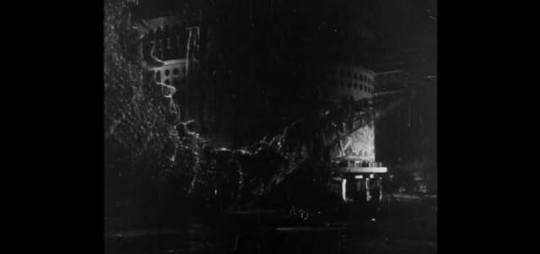

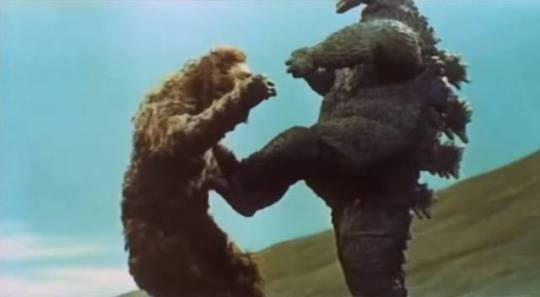
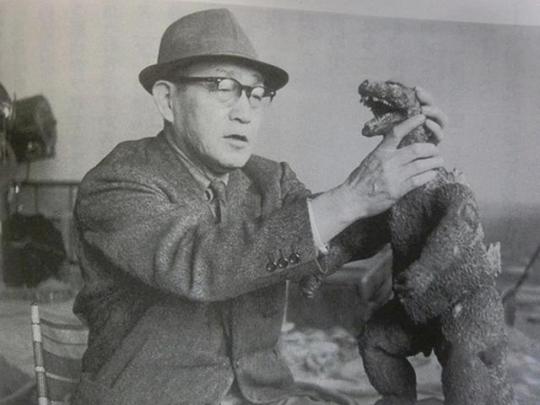
November is a big month for kaijū fans and aficionados. One reason is that November 3rd marks the anniversary of the original GODZILLA’s Japanese theatrical release in 1954. This year the Big G turns 63. Seeing how I technically missed the opportunity to do an anniversary post I thought I’d still like to put up something reflecting on the original film and its legacy. And then this topic came to mind…
A STOP-MOTION GODZILLA
Back in 2015 stop-motion animator and friend of this blog, Mark Wolf – best known for the educational paleo-short THE AGE OF MAMMALS (81) – offered up his speculations on how the original GODZILLA (54) may have been different if stop-motion animation, a la the work of Ray Harryhausen, had been used instead of suitimation. Wolf penned this piece as part of a series of posts for The Fantastic World of Ray Harryhausen Facebook page called “What If Ray Harryahusen Had Made… Theatre.” I found Wolf’s conjectures and insights fascinating and this led to a discussion between us about how and why stop-motion was and wasn’t used on GODZILLA.
To be clear Wolf was never attempting to disparage the original GODZILLA as a film, writing that he “respect[s] the original Japanese GOJIRA’s black & white cinematography, impressive score and anti-nuke sentiments” but nevertheless finds “the visualization of Godzilla… laughable, especially when compared to KING KONG (33) or THE BEAST FROM 20,000 FATHOMS (53).” In particular, Wolf highlights the scenes of Godzilla’s maritime activity noting that while Godzilla sinks multiple boats in his premiere film he never appears in the same shot as any of them, which is in stark contrast “to [a similar] shot in BEAST when the Rhedosaurus sinks a ship.” Because Wolf believes that stop-motion provides a better “performance” then suitimation he says he’ll gladly take “Ray’s approach every time.” Note that Wolf’s emphasis here is on “performance,” not realism. Many western critics reject tokusatsu films for looking “fake,” but Wolf openly acknowledges that stop-motion is no more “realistic” looking then suitimation.
As for other ways GODZILLA may have been different had stop-motion been employed, Wolf starts off by pointing to Godzilla’s American precursor; THE BEAST FROM 20,000 FATHOMS (53). Based on the short-story “The Foghorn” by Ray Bradbury and published in The Saturday Evening Post in 1951, Wolf observes that the dinosaur featured in the original painting by James Bingham which accompanied the story’s debut “looks more like Godzilla” then the model creature that Harryhausen would later produce. Wolf speculates that had stop-motion been involved in the production of GODZILLA that the titular monster, freed from the constraints of needing to fit a human inside its anatomy, may have also been much closer to that of Bingham’s painting or even the Rhedosaurus from BEAST and points to Tony McVey’s re-imagined model of Godzilla as a quadruped as one possibility.
However for everything gained something must be lost and Wolf writes that the downside to a stop-motion Godzilla is that it would have almost certainly annulled SFX director Eiji Tsuburaya’s impressive miniature cityscapes. Wolf notes that Harryhausen “tended to avoid” such elaborate miniatures “because they were repetitious and limited in their performances” preferring instead to composite his creatures into live-action sets.
All this speculation of course gives rise to the question of why Tsuburaya – a great admirer of Willis O’Brien’s work on KING KONG – didn’t employ stop-motion on GODZILLA? On this point Wolf addresses the two most frequently circulated claims about why Tsuburaya didn’t employ stop-motion: A) because “Toho couldn’t afford stop-motion” and B) because “no one in Japan at the time [was] capable of pulling off the effect.” With regards to both of these claims Wolf argues that neither makes any sense. Regarding cost Wolf points out that many of Harryhausen’s films, like “EARTH VS THE FLYING SAUCERS (56) had a $120k negative cost,” which is well below GODZILLA’s entire production budget of $175k. As for the claim that Japan lacked talented stop-motion animators, this is entirely erroneous and flies in the face of the fact that “there is stop-motion in GODZILLA, including the most singularly bizarre use of model animation for VFX, ever - a shot of a fire truck overturning and spilling two firemen who have been riding on the sides (note how the headlights come on as the scene progresses)” as well as “a different shot, of Godzilla’s tail, [which] is ideal for animation and I am not at all surprised they tried it at least once.”
Wolf goes on to speculate that the real reason that Tsuburaya didn’t employ stop-motion is because director Ishiro Honda was “impatient” – basically envisioning a scenario similar to what happened to O'Brien while working on Irwin Allen’s THE LOST WORLD (1960) which I’ve previously blogged about here. However on this point I had to correct Wolf, since the decision not to use stop-motion on GODZILLA wasn’t Honda’s but rather actually came down from Toho Studios Production Manager Iwao Mori, and only after Tsuburaya told him that it would take seven years to complete the film if stop-motion was used. Wolf found this claim, that Tsuburaya estimated it would take seven years to film GODZILLA with stop-motion, “hilarious” and wondered where he got such a ridiculously inflated number from since he would have “certainly [known] KONG didn’t take years to film” and noting that on average “the VFX for [a Harryhausen film like] JASON AND THE ARGONAUTS (63) [only] took nine months.” BEAST only took a year.
In light of this I have to wonder if Tsuburaya was truly being sincere or deliberately hyperbolic when he told Mori it would take seven years to shoot GODZILLA with stop-motion. Was Tsuburaya really that ignorant about how long such a process would take? Or was it Mori who wanted stop-motion and Tsuburaya who didn’t and knew he could scare the producer out of the idea with such an over-the-top estimate of the time needed to film the movie?
However even if it wouldn’t have actually taken Tsuburaya seven years to do GODZILLA in stop-motion it nevertheless would have still been unfeasible since, as I pointed out to Wolf, the one thing Tsuburaya didn’t have was time. It’s important to remember that the original GODZILLA was not a well-planned out film. GODZILLA was released on Nov. 3rd, 1954 and producer Tomoyuki Tanaka came up with the idea on a plane ride back to Tokyo in mid-April of that same year as a last minute replacement for a war movie which had fallen through. Though Tanaka would go on to relate a number of tall-tales over the years about what his inspiration for Godzilla was, the reality clearly appears to be that the trade papers at the time were reporting that Toho’s main studio rival, Daiei, was going to be releasing THE BEAST FROM 20,000 FATHOMS in Japan in December of ‘54 and that Tanaka had decided that Toho could beat them to the punch by whipping out their own domestic monster movie a month before. Here Wolf also points out that WB, the US distributors for BEAST, had netted a nice $5-Million in box office returns on the film after only paying $250k to acquire it, numbers which certain caught the eyes of execs at both Toho and Daiei. Once Tanaka had convinced his fellow Toho brass to invest in this admittedly risky venture, spending three times what they had spent on any previous film on GODZILLA, pre-production got underway in early May and production in early July. Tsuburaya’s team didn’t begin work however until August at which point they had about two months to shoot the 263 SFX shots (out of 868 shots) needed for the film. Steve Ryfle writes in his book Japan’s Favorite Mon-Star (98) that all-total Tsuburaya spent 71-days shooting the special-effect scenes for GODZILLA. As Wolf acknowledged, with such a small window of time to work in “not much could [have been] delivered” if stop-motion had been employed, “so hand-puppets, animatronics, [and] suits would [have made more] sense.”
But Wolf also finds himself still puzzled over GODZILLA’a random use of stop-motion, including that perplexing and admittedly unconvincing fire truck scene which he feels strongly that “no sane VFX Director would [have] elected to do” in stop-motion given that one of the things stop-motion is historically poor at portraying is objects moving at high speeds. The end result of such a shot is what for all the world looks like a toy fire truck with dolls being knocked over. I told Wolf that while I didn’t know about the fire truck scene itself I thought an apt parallel to it could be found in August Ragone’s 2007 biography of Tsuburaya in which he recounts a popular antidote concerning the 1965 Toho film FRANKENSTEIN CONQUERS THE WORLD. Here Tsuburaya needed to shoot a scene in which the dinosaur-like kaijū Baragon attacks a stable full of horses. To accomplish this some decidedly fake looking miniature horses were placed in the scene for the monster to menace. When asked by a young intern why he had opted for the model horses over a composite shot using real horses Tsuburaya simply replied: “Because using a model horse was more fun!” Personally I think this antidote tell you everything you need to know about Tsuburaya and his aesthetic philosophy when it came to special-effects.
Tsuburaya would employ stop-motion in one other Godzilla film, 1962’s KING KONG VS GODZILLA, which is actually based on a story idea originally conceived by Willis O’Brien for a Kong sequel is which the supersized simian would have fought a giant-sized version of Frankenstein’s Monster. The first example of stop-motion in KING KONG VS GODZILLA is during the attack of the giant octopus on Faro Island where several of the octopus’ tentacles are stop-motion. Later there are several long-distance and aerial shots of both Kong and Godzilla which are done with stop-motion models. However the most obvert and dramatic example is a brief sequence in which Kong charges Godzilla, prompting Godzilla to rear up on his tail and deliver a kangaroo-kick to Kong’s chest; knocking the giant ape backwards. Another reason why Tsuburaya likely abandoned using stop-motion in his films is because it did not convincingly match the look of the suitimation monsters. This was the reason given by special-effects director Koichi Kawakita – who had mentored under Tsuburaya – for his own rejection of stop-motion when he assumed the role of head SFX-director at Toho beginning with GODZILLA VS BIOLLANTE (89). Kawakita had considered using stop-motion in this film and had a roughly 20-second sequence made in which Godzilla fights off the plant monster’s tendrils. However it was never used, ultimately being relegated to the deleted scenes section of the DVD and eventually YouTube.
IMAGES
1) Tony McVey’s re-imagined Godzilla model kit
2 - 3) The only two stop-motion shots to appear in the original GODZILLA (54)
4 - 5) Kong and Godzilla throw down stop-motion style briefly in KING KONG VS GODZILLA (62)
6) Eiji Tsuburaya with his underutilized stop-motion Godzilla puppet
#godzilla#godzilla 1954#eiji tsuburaya#stop-motion#stop-motion animation#ray harryhausen#koichi kawakita#willis o'brien#ishiro honda#tomoyuki tanaka#suitimation#rhedosaurus#the beast from 20000 fathoms#ray bradbury#mark wolf
124 notes
·
View notes
Text
reading the Dark Era light novel for Bungou Stray Dogs, somethings really struck me (all about Mori and Dazai’s conversation lol):
First, Dazai didn’t just leave because of Odasaku’s words requesting he leave and he didn’t just leave because of the way that Mori seemingly betrayed and manipulated him by killing Odasaku. The conversation with Mori makes it clear that there is a newly-discovered fundamental difference in their philosophies that can never be reconciled. Mori directly states his viewpoint for Dazai’s edification:
“Dazai, as the boss, I am at the top of the organisation, but I am also a slave to the entire organisation. For the survival of the Port Mafia, I must automatically submerge my entire body in all the filth. Consuming the enemy’s strength, allowing our own people to unleash their greatest potential, for the organisation’s continued survival and prosperity, logically, no matter how cruel the action, I must carry it out happily. Do you understand what I’m trying to say?”
Mori is loyal to the organization. He’s willing to sacrifice any small part of the organization, any life that makes it up, in order to protect it--which he does here by obtaining the Abilities Business Permit to forever keep the government off the mafia’s back for their ability users through sacrificing Oda’s life.
Dazai recognizes this but finds that his friendship, the individual value he places on Odasaku’s life is more important than the overall welfare of the organization. As he tells Mori,
“Indeed, there is no merit [to going to Odasaku’s side or saving him]. I am going for one reason, because he’s my friend.”
Second, I think that this conversation, this situation, was also set-up by Mori to test Dazai’s eligibility to take over the Mafia.
In his conversation with Oda, Mori says,
For all you know, in four or five years, he may be able to kill me and sit on this chair.
Mori is clearly thinking of Dazai potential succession to the throne. We know Dazai witnessed Mori’s ascension, and here Mori is clearly thinking of Dazai doing the same thing to him one day not too far off.
In remembering the incident where Mori became the mob boss by killing the old one, we also remember why Mori took the throne. The old boss was threatening the lives of all the members of his organization and the organization itself, so Mori disposed of him. Mori’s succession is all about protecting the mafia, and in conversation with Dazai, he seems to be probing Dazai to return the same answer that Mori has reached: individual people are with sacrificing for the greater cause.
He begins the conversation by reminding Dazai that Dazai has always acted in the best interest of the organization before:
“If it is what the prodigy Dazai thinks, then there shouldn’t be anything wrong. No matter the time, you’ve always made a great contribution to me and the Port Mafia, and I hope today will be no different.”
Next, Mori treats Dazai’s request as an oratorical argument and, just like a teacher, points to whether or not Dazai’s words will help build his case. Mori ignores the direct content of the words to remind Dazai that this conversation should be functioning to convince Mori to listen to Dazai.
“That’s a good start.” Ougai nods. “Sometimes, speaking the truth will earn you the greatest negotiating power. You may, I agree. But can you tell me the reason?”
Next, Mori asks a number of questions which attack Dazai’s logic, poking holes in it. Dazai is unable to resolve the holes. Mori then reveals the envelope, which tells Dazai the line of logic that Mori has used to act up to this point. Dazai’s intellect is certainly quick enough that he had some idea before this, and now has the whole picture: that test Dazai could always pass with flying colors. And yet, the conversation Dazai still cannot accept Mori’s reasoning. Mori has questioned and probed Dazai, leading him to the conclusion that Mori wants, but Dazai cannot make that final step.
What really cements this as a test to me is this paragraph from the epilogue that did not make it in any way into the anime:
Even if one added up the financial losses and talented subordinates lost, the organisation had still obtained enough benefits to offset these losses. Dazai’s disappearance had long been predicted as well. Looking at it logically, it was the best outcome, all according to plan.
Mori knew that he would lose Dazai! Mori went into this plan two year long plan knowing that it could cost him Dazai, and he did it anyway. Thus, the conversation he holds with Dazai must be made in full knowledge that Dazai could leave the organization when it’s done. All of Mori’s words here are made with the awareness that Dazai might leave, and the fact that Mori knew that and chose to bring up Dazai’s future earlier in the novel makes me think that the gentle leading of this conversation is the final test that Dazai has failed to pass to be the head of the Mafia. How could Mori approve of a leader who may prioritize the individual over the organization, who has a fatal weakness like that?
Thirdly, this is all fascinating in its own right, but it’s even more fascinating because it convinces me that Dazai really deserves his role at the ADA. Odasaku’s final words to Dazai seemed to support the idea that Dazai is unable to achieve the emotions that make all the other members of the ADA loyal to their organization:
No matter whether you’re on the side of killing people or saving people, there will never be anything that can surpass your mind. There is no place in this world that can fill your loneliness. You will linger in the darkness forever...Go to the side that saves people!
If Dazai goes to the side that saves people just because of these words, these words that tell him he can never truly connect or care about other people, that don’t even really appeal to his need for companionship as much as his intellectual boredom, if Dazai joined the ADA because of these words, then he does so without fully being able to take part in the close emotional bond and hope that the ADA provides for it’s gangly crew of troubled orphans. Dazai’s scheming throughout the course of the manga seems to supports this--if Dazai was thinking about the larger picture of protecting the city even when he and Atsushi met, then has Dazai actually bonded with Atsushi in any way?
However! If Dazai’s joining the ADA can be seen as a rejection of Mori’s pure logic, utilitarian philosophy in favour of a value on individual lives, then he has approached the moral standards and bonds of the ADA. There is hope that we’ll see some truly authentic care, bigger picture thrown to the wind, from Dazai.
Honestly, I think that will be the climax of the manga for me, when I have the satisfaction of knowing that Dazai has the kind of hope and love for others that is one of Atsushi’s strong points, that he can overcome his loneliness and sense of meaninglessness through unbridled connection.
85 notes
·
View notes
Note
Do you have any hcs about how Mori, Fitzgerald, Hawthorne, and Steinbeck would go about trying to court someone they were interested in?
Mori Ougai
Before he begins his pursuit in earnest, Mori consults Elise. No matter how much you’ve piqued his interest (probably quite a bit, considering that he’s chasing after you for more than just what’s in your pants), the girl has to give you her stamp of approval. Without Elise’s favor, the match will simply fall apart; thus, he checks sooner rather than later. She’ll tease him of course, denying you initially, but after he’s begged enough she’ll grant the go-ahead. After that, there’s no shaking the leader of the Port Mafia.
Mori’s a textbook gentleman whenever you’re together. Many of the manners completely lost on younger men manifest in the Port Mafia’s leader. He never neglects to pull out your chair when you sit, or offer the crook of his arm, escorting you wherever you wish. Mori’s hands remain exactly where they belong; he never tries to sneak in subtle, ‘accidental’ brushes to somewhere a bit too sensitive for mere acquaintances. No matter what you’re wearing, he keeps his eyes out of danger, as well (at least, you’ve never caught him eyeing you up).
Despite his manners, Mori makes his intentions perfectly clear. There’s no way you can misinterpret his politeness for indifference. He’s constantly inviting you on lavish ‘outings’ (titling them as ‘dates’ would be much too forward, after all) and slipping subtle hints that he’s after more than just your friendship.
Especially if he’s not getting the response he’s after, Mori’s immediately orchestrating schemes to draw you to him. Though she doesn’t exactly approve of the Port Mafia’s leader seeking after you, Kouyou is often brought into these missions; such a game is simply too tantalizing for her to pass up. Regardless of whether she’s drawn to you personally, Kouyou’s often in your company. At Mori’s request, she fills your ears with countless tidbits and gossip about his genuine liking for you, teasingly prodding you as to when you’re going to accept his hand.
While he wouldn’t dream of putting you in actual danger, Mori orchestrates menacing situations to see how you react when confronted with threats. Getting serious would shove you in harm’s way whether you like it or not, and he needs to be assured that you can handle the stresses of being a target. Plus, the way you cling to him after he ‘saves’ you is a delightful side benefit.
Francis Scott Key Fitzgerald
As soon as you attract Fitzgerald’s curiosity, it’s no-holds-barred. He’s determined that you’ll be his. With his money, attracting you will be a piece of cake; at least, that’s what Fitzgerald initially thinks. At every opportunity, he throws lavish parties, invites you to all of his various properties scattered around the globe, showers you in elaborate, expensive gifts, claiming that the ‘simple trinkets’ remind him of you. Fitzgerald waxes poetic every chance he gets, and when that doesn’t stick, he just tosses money at you in hopes that you’ll swoon.
If his cash doesn’t interest you, Fitzgerald is only that much more hell-bent on making you fall in love with him. Ever since he entered the world of the rich, that’s all anyone’s ever been drawn to. Fitzgerald decides he needs to know what makes you so different, and there’s no way he’s going to let you slip out of his grasp without finding what makes you tick.
Fitzgerald, like any ruler of high-society, is intimately acquainted with the power of rumors, and he will do anything to get people talking. All of his butlers and maids are encouraged to spread word about how often he’s at your elbow, the looks that swim through his blue eyes when he’s focusing on you, the fact that he’s been looking into romantic travel destinations recently. Fitzgerald’s hoping that the juicy details trickle down to your friends and family, eventually; he knows that he’s a hell of a catch, and anyone that truly cares for you should encourage you to make a move before he gets sick of chasing you and moves on. The gossip mill is Fitzgerald’s subtle way of tactically surrounding you, ensuring that he’s on your mind 24/7.
Fitzgerald doesn’t fully reign in his dramatic tendencies, but he does calm down around you. While he’s still a show-off, hoping to impress you with all of his numerous qualities, he wants to communicate that he’s not just an airheaded fop, on the prowl for pretty arm candy. Fitzgerald fully understands that his showy personality might make you think he’s after you just so that he has someone to chase, and he’ll do anything to assure you otherwise.
Nathaniel Hawthorne
When Hawthorne discovers his feelings for you, he’s a bit lost. Flirtation isn’t something that’s closely examined in theology textbooks; at least, not the respectable ones. Hawthorne doesn’t believe in fooling around with attractive lady he sets his eyes on, either, so he hasn’t exactly had much practice. Despite this, he’s convinced that wooing you won’t be so hard.
Hawthorne is more reserved at first; he dreads getting tangled up with someone he doesn’t truly care for, as his sense of duty would force him to stick with them. He doesn’t flirt at all until he’s completely sure that you’re exactly what he truly wants. Because of this, you might get some uninterested vibes when he first starts pursuing you, but don’t give up on him! Hawthorne’s only ensuring he doesn’t rush into something he’ll regret.
At first, Hawthorne’s quite casual with your conversations; much of your talks together seem built of only small talk, polite commentaries of the weather or what’s been headlining in the news. If Hawthorne hasn’t used these little chats to convince himself that he’s not really harboring feelings for you, though, your talks together will take an extremely sudden turn into deep topics, almost entirely without warning. Hawthorne can’t stand chitchat; at least, not when he’s truly trying to get to know someone. Once he’s sure that discussing such questions with you won’t make you uncomfortable, he starts in on the topics that’ll truly show what kind of a person you are. Your opinions on what life’s really about, what happens after death, if there’s any set ‘good’ and ‘evil’; this is what Hawthorne uses to color a picture of what you’re really like, and to determine if his feelings for you are more than a passing whim. Philosophy sessions, though they might not be romantic, exactly, are what bind his heart to yours.
Before he starts pursuing you in earnest, Hawthorne drops hints at his interest. While he doesn’t give a damn if anyone else is after you, too, he’ll back off if you’re looking at someone. The last thing he wants is an awkward confrontation and needlessly hurt feelings because he proved too bold. As soon as you pick up these hints, and start leaving a few of your own, it’s the last push Hawthorne needs to entirely make up his mind. At this point, he practically considers you engaged.
Though he’s gradual, and respectful as a perfect gentleman, Hawthorne seriously commits to romancing and makes surprisingly direct moves. Once he’s firmly made up his mind, he’s determined to show you just how much he really cares. Soon, lingering touches start happening more and more, Hawthorne taking every opportunity to brush his skin against yours. You’re often surprised with kisses; they’re light, and innocent, and pressed against your knuckles instead of your lips more often than not, but there’s no mistaking that’s what they truly are. Hawthorne’s suddenly surprisingly bold; there’s no mistaking the message he’s trying to send.
John Steinbeck
The moment Steinbeck decides you’re going to be his, you’ll know. He’s so open that only a brick wouldn’t pick up on the fact that he’s in pursuit. Hugs that last for a few beats too long to be just friendly, entirely shameless heated gazes that clearly show what’s on his mind, countless little tokens of affection ranging from sweets that his mother baked to books that he thinks you’ll enjoy; you’re not safe from any of it. Somehow, though, he knows how to keep just enough distance so that you don’t feel trapped or like he’s clinging to you
Though he doesn’t frame it as a date until he’s entirely sure you’re interested, Steinbeck invites you to every family function from Easter dinner to birthday celebrations. Anyone he’s pursuing needs the Steinbecks’ stamp of approval, and he figures it’s better to ensure his family adores you now than risk them rejecting you when he’s head-over-heels in love (he’d still marry you, of course, but it would be a hard decision between staying true to himself and letting down his family). Plus, he can’t wait to see how you react when his younger siblings inevitably accuse you two of dating (especially if he tells them yes, actually, you are, just to make you blush).
Pray that you don’t have a floral allergy, because with Steinbeck around, you’ll never escape the flowers. He quickly ferrets out what kind of blooms are your favorite, and from then on, they’re growing everywhere around you. Whether they be arranged in a bouquet for you and left with a sweet little note like ‘Y’know, I still think you’re prettier than these’, or sprouting all over the earth by where you work, flowers surround you at every turn. Maintaining the plants around you is Steinbeck’s subtle way of telling you you’re always on his mind.
Steinbeck invites you on outings practically everywhere, and once he’s certain that the term ‘date’ won’t send you running for the hills, that’s what he starts calling them. Even if he still hasn’t asked you to be his yet, he’ll still title every trip together a date. And there are a lot of trips together. Steinbeck’s a farm boy completely outside of anything he’s ever known, after all; so much piques his curiosity, and he figures there’s no better person to experience all of these new things with than you. Expect completely out of the blue calls from Steinbeck, inviting you along to some off the wall restaurant with boiled squid sushi, or to a farmer’s market a few miles outside of Yokohama’s borders. Nothing is too strange to drive Steinbeck away, and you can bet that if he’s running into something odd, he’ll make space for you to run into it, too.
#Bungou Stray Dogs#Bungou Stray Dogs Headcanons#Mori Ougai#Fitzgerald#Steinbeck#Hawthorne#Nathaniel Hawthorne#John Steinbeck#Francis Scott Key Fitzgerald#BSD Imagines#Mori
290 notes
·
View notes
Text
Google Plus:Politics Immersion Therapy (Closed Source)Terms:English As of June 1st 202,018
Civil Asset Forfeiture - law enforcement officers take assets from persons suspected of involvement with crime or illegal activity without necessarily charging the owners with wrongdoing.
Due Process- fair treatment through the normal judicial system, especially a citizen's entitlement to notice of a charge and a hearing before an impartial judge.
knuckle-dragging- Holding beliefs, or having attitudes thought to be primitive or uncivilised.
Ponzi scheme- is a fraudulent investment operation where the operator provides fabricated reports and generates returns for older investors through revenue paid by new investors, rather than from legitimate business activities or profit of financial trading.
Free Enterprise- an economic system in which private business operates in competition and largely free of state control.
Long March- was a military retreat undertaken by the Red Army of the Communist Party of China, the forerunner of the People's Liberation Army, to evade the pursuit of the Kuomintang (KMT or Chinese Nationalist Party) army.
Russophile- person who is friendly towards or fond of Russia, especially someone who is sympathetic to the political system and customs of the former Soviet Union.
Demagogue- a leader in a democracy who gains popularity by exploiting prejudice and ignorance among the common people, whipping up the passions of the crowd and shutting down reasoned deliberation
Empiricist- an advocate or supporter of empiricism
Barnburner (idiomatic) - An extremely exciting or successful event or person.
Youthquake (informal) - A noticeable shift in society or culture in response to the activities or tastes of younger members of the culture.
Orwellian- Resembling the totalitarian political methods decried in the works of writer George Orwell, particularly in the dystopian novel Nineteen Eighty-Four; characterized by use of misleading terminology, propaganda, censorship, totalitarianism, surveillance and repression.[1950]
Seditious- Of, related to, or being involved in sedition; treasonous or subversive.
Intersectionality- The quality or state of being intersectional, that is, of being characterized by intersection (especially of multiple forms of discrimination).
Phalanstery- An association or community organized on the plan of Charles Fourier, with living space divided hierarchically and higher pay for those carrying out unpopular tasks.
no-go zone (no-go area)- is an area in a town barricaded off to civil authorities by a force such as a paramilitary, or an area barred to certain individuals or groups
Tokenism- A policy of formally complying with efforts to achieve a goal by making small, token gestures; especially to hire a minimal number of ethnically diverse or disadvantaged people
Transphobic- Relating to or characteristic of transphobia.
Nest Egg- (idiomatic) A saving; a reserve of money.
Sovereignty- (of a person) The liberty to decide one's thoughts and actions.
Fake News- news stories with false information, deliberately created to misinform
Agathocacological- Composed of both good and evil
Memento Mori- An emblematic object or personal ornament, such as a skull, used as a reminder of one's mortality.
Junta- All the people who are involved in some form of political intrique
Androlepsia- A kidnapping by a foreign government for political gain
Orthpolitiphobia- A fear of political correctness
Narcokleptocracy-Rulership by drug dealers with ties to politicians and
the military
Politicaster- Second rate politician or incompetent leader
Politicophobia- A fear of politicians
Psephology- The study of political elections
Roorback- An ugly rumor of fabricated news story created to discredit a
political opponent
Quockerwodger- Originally a wooden toy which moves when a string is
pulled, now also means a politician who is controlled by someone else
Snollygosters- Sleazy politicians or lawyers
Navel-gazing- (derogatory) Excessive focus on oneself; self-indulgent introspection.
Marxist Feminism- is feminism focused on investigating and explaining the ways in which women are oppressed through systems of capitalism and private property
Pluralism- denotes a diversity of views or stands rather than a single approach or method.
Association Fallacy- is an informal inductive fallacy of the hasty-generalization or red-herring type and which asserts, by irrelevant association and often by appeal to emotion, that qualities of one thing are inherently qualities of another.
Equate- To consider equal, to state as being equivalent.
Canadaphobia- Fear or hatred of Canada, its citizens, and/or its culture.
Microaggression- (sociology) Any small-scale verbal or physical interaction between those of different races, cultures, beliefs, or genders that has no malicious intent, but that can be interpreted as an aggression.
Mediocrity- (uncountable) The condition of being mediocre; having only an average degree of quality, skills etc.; no better than standard.
Fascist - (informal) Unfairly oppressive or needlessly strict.
Hyperbole- is the use of exaggeration as a rhetorical device or figure of speech.
Libertarian- (chiefly US) A believer in a political doctrine that emphasizes individual liberty and a lack of governmental regulation, intervention, and oversight both in matters of the economy (‘free market’) and in personal behavior where no one’s rights are being violated or threatened; also, a ‘classical liberal’, akin to an ‘anarcho-capitalist’.
Social constructionism- (sociology) A theory of knowledge according to which human beings rationalize their experience by creating a model of the social world and how it functions, and language is the most essential system through which humans construct reality
Broadscale- On a broad scale; which is spread over a broad area
Groupthink- A process of reasoning or decision-making by a group, especially one characterized by uncritical acceptance of or conformity to a perceived majority view.
Identity Politics - Politics focusing on the self-interest and perspectives of people in various groupings, such as ethnicity (ethnic group), race, religion, gender, and sexual orientation.
Censorship- The use of state or group power to control freedom of expression or press, such as passing laws to prevent media from being published or propagated.
Iconoclasm- The belief in, participation in, or sanction of destroying religious icons and other symbols or monuments, usually with religious or political motives.
Sexist- A person who discriminates on grounds of sex; someone who practises sexism.
Scientism- The belief that the scientific method and the assumptions and research methods of the physical sciences are applicable to all other disciplines (such as the humanities and social sciences), or that those other disciplines are not as valuable.
White Privilege- (social sciences) The collective advantages that white people accrue from society, as a result of colonial history etc.
Progressive- Favouring or promoting progress; advanced;Advancing in severity.
Thick-skin - (idiomatic) Ability to take criticism or harsh behavior without being easily offended.
Feminism - A social theory or political movement which argues that legal and social restrictions on women must be removed in order to bring about equality of the sexes in all aspects of public and private life.
Mealy-mouthed - prone to speaking evasively, indirectly, or duplicitously; not forthright
Ethnic nationalism - is a form of nationalism wherein the nation is defined in terms of ethnicity.
Bourgeois nationalism - is the practice by the ruling classes of deliberately dividing people by nationality, race, ethnicity, or religion, so as to distract them from initiating class warfare.
Neoliberalism - refers primarily to the 20th-century resurgence of 19th-century ideas associated with laissez-faire economic liberalism.
White nationalism - is a type of nationalism or pan-nationalism which holds the belief that white people are a race[1] and seeks to develop and maintain a white national identity.
Classical liberalism - is a political ideology and a branch of liberalism which advocates civil liberties under the rule of law with an emphasis on economic freedom.
Cultural appropriation - is a concept dealing with the adoption of the elements of a minority culture by members of the dominant culture.
Presitator - an amalgam of dictator and president; typically referring to president with dictator like qualities or to a fascist who poses as a president
Anecdotal evidence - is evidence from anecdotes, i.e., evidence collected in a casual or informal manner and relying heavily or entirely on personal testimony.
Ethnic enclave - is a geographic area with high ethnic concentration, characteristic cultural identity, and economic activity.
Right of asylum - is an ancient juridical concept, under which a person persecuted by their own country may be protected by another sovereign authority
Secret police - refers to intelligence, security or police agencies that engage in covert operations against a government's political opponents.
clout - Influence or effectiveness, especially political.
Ethnocentrism - is judging another culture solely by the values and standards of one's own culture
Interlocutor - (politics)is someone who informally explains the views of a government and also can relay messages back to a government
Empirical evidence - is the information received by means of the senses, particularly by observation and documentation of patterns and behavior through experimentation.
Anti-foundationalism - is any philosophy which rejects a foundationalist approach. An anti-foundationalist is one who does not believe that there is some fundamental belief or principle which is the basic ground or foundation of inquiry and knowledge.
hysteric - A hysterical person.
tarassis - The male equivlant of hysteria (which technically only applied to women)
Street harassment - is a form of sexual harassment that consists of unwanted comments, gestures, honking, wolf-whistlings, catcalling, exposure, following, persistent sexual advances, and touching by strangers in public areas such as streets, shopping malls, and public transportation
Antifa - (United States)They engage in militant protest tactics,[6] which has included property damage and physical violence.[2][7][8][9] They tend to be anti-capitalist[10] and they are predominantly far-left and militant left,[11][5] which includes anarchists, communists and socialists.
Gender essentialism - is the theory that there are certain universal, innate, biologically- or psychologically-based features of gender (different from sex) that are at the root of observed differences in the behavior of men and women
Straw man - is a common form of argument and is an informal fallacy based on giving the impression of refuting an opponent's argument, while actually refuting an argument that was not presented by that opponent.
Mainstream feminism - as a general term identifies feminist ideologies and movements which do not fall into either the socialist or radical feminist camps
Patriarchy - is a social system in which males hold primary power and predominate in roles of political leadership, moral authority, social privilege and control of property
Marxism - the socialist and communist ideology of the followers of Karl Marx and Friedrich Engels; a radical, revolutionary political philosophy that aims to capture state power, introduce a dictatorship of the proletariat, and then progress to communism.
neo-Marxism - (Marxism) Marxism updated for the modern world.
power structureA system of authoritative power in an institution.
toxic masculinity(gender theory) Those aspects of traditional masculinity perceived to reinforce aggression, emotionlessness and other negative qualities, theorized as a component of masculine ideology, particularly in the United States.
biological essentialism - The belief that 'human nature', an individual's personality, or some specific quality (such as intelligence, creativity, homosexuality, masculinity, femininity, or a male propensity to aggression) is an innate and natural 'essence' (rather than a product of circumstances, upbringing, and culture).
latinx - uncommon, chiefly US) gender-neutral form of latino or latina.
Value judgment - is a judgment of the rightness or wrongness of something or someone, or of the usefulness of something or someone, based on a comparison or other relativity.
Gender expression - refers to the aspects of a person's behaviour, mannerisms, interests, and appearance that are associated with gender in a particular cultural context, specifically with the categories of femininity or masculinity.
the dialectical method - is at base a discourse between two or more people holding different points of view about a subject but wishing to establish the truth through reasoned arguments.
marginalized - Subject to marginalization
imperialism - The policy of forcefully extending a nation's authority by territorial gain or by the establishment of economic and political dominance over other nations.
colorism - Prejudice or bias against persons on the basis of their skin color or complexion, often among persons of the same racial identification.
Victim blaming - occurs when the victim of a crime or any wrongful act is held entirely or partially at fault for the harm that befell them.
Rape Culture - A culture, environment or society where rape (a form of sexual assault) is common, and in which social attitudes or practices work to trivialize sexual violence, make rape seem normal, or shift responsibility from rapists to rape victims. [
apolitical - Having no interest or involvement in politics.
cherry-pick - (idiomatic) To pick out the best or most desirable items from a list or group, especially to obtain some advantage or to present something in the best possible light.
#civilassetforfeiture#dueprocess#knuckle-dragging#Ponzi scheme#Free Enterprise#Long March#Russophile#Demagogue#Empiricist#Barnburner#Youthquake#Orwellian#Seditious#Intersectionality#Phalanstery#no-go zone#Tokenism#Transphobic#Nest Egg#Sovereignty#Fake News#Agathocacological#Memento Mori#Junta#Androlepsia#Orthpolitiphobia#Narcokleptocracy#Politicaster#Politicophobia#Psephology
0 notes
Text
Love & Amoralism
Being in love with someone and treating that person right go hand in hand. But what if you don’t love that person anymore? And what if you do love someone else? I’m thankful that another writer1 has approached break-ups from a moral angle. The strategy he uses is to assess the utility of rebounds: how can lining up a new relationship produce the most happiness for all interested parties. Utility is a clever solution, but treating love (even the termination of love) as a math problem just feels, well, unromantic. It’s as if the writer suggests that we should strategize how to feel about someone based on possible moral outcomes. This approach makes me feel like love is a pile of aluminum cans that is weighed and then checked against the going-price for aluminum that day. (Romantic) love is passionate, and reckless, and aluminum cans aren’t.
This is not to say ethics has no bearing on love. The fact that, in the following post, I’ve tried to find a moral justification for love shows that I must think, on some level, love is subject to morality. Else, I might believe “all’s fair in love and war”. If this statement is true, then either love, as an end, is so good that it permits any means to it, or any act in the service of love has no moral distinction—which is as good as saying it has no moral definition. I hardly think love legitimizes any action whatsoever (see #governor), but I will consider whether love is neither moral nor immoral, but amoral.
The characters of The Walking Dead find themselves in a world of perpetual strife—a world in which, it would seem, love becomes one of the few things left to live for. Moral philosophers of the past have taught us that the purpose of upright conduct is not just to deny ourselves pleasure, and not just to avoid divine retribution, it’s to live better lives filled with true happiness and more peace. Romantic love may not be a condition for happiness, but it’s something that makes us happy, so surely ethics would be concerned with romantic love.
One of the hard parts about breaking up is figuring out how much consideration we owe our exes, and for how long—especially if the desire for them is gone. Should we be friends? Should I start dating right away?—those kinds of questions. To be fair, this is what the writer I mentioned above wonders. Does it even make sense to say I have an obligation to someone now simply because I did in the past? Deontology is about moral duty: we are duty-bound to obey certain principles; or, we are duty-bound to serve certain interests, such as the allegiance a citizen owes to his/her country. There’s a famous line written by the Ancient Roman poet Horace which goes “dulce et decorum est pro patria mori”, which basically translates to “sweet & seemly it is, for fatherland one should die” or, simply, “it’s honorable to die for your country”. As Dr Santanu Das shares from his study of WWI literature, this line appeared in many pro-war poems written while Britain mobilized against the Central Powers2. Late in the war, an English soldier named Wilfred Owen denounced the falsity of this phrase in one of the most famous anti-war poems ever written3. Owen’s poem dismantles a moral principle by describing in graphic detail the unenviable fate of a fallen soldier. Similarly, opponents of duty-based ethics think it’s more important to consider the consequences of morally-guided actions than the principles behind them. Nonetheless, we often feel we have a certain obligation to people we love—and to those with whom we fall in love (it seems that love and war are going to be constant themes in this post). It’s those people’s happiness that we should consider first. In contrast, utilitarian ethics asserts that we should always consider the greater good. Just imagine promising your boyfriend/girlfriend/partner/spouse that you’ll always consider his/her happiness…equally to everyone else’s. It would seem to make sense that if I feel obligated to someone because of my love for her, that that love has moral value.
Philosophy has a hard time justifying love—an even harder time than justifying war. Philosophy demands answers, which is why we would find it necessary to “justify” love, and not just relax and enjoy it. Bennett Helm has a wonderful summary of the most recent contributions to the philosophical discourse of love4. In it, he collects opinions about why it’s good to love, in general, and why it’s good to love a particular person. This latter justification prompts a few questions:
What, if anything, justifies my loving rather than not loving this particular person?
What, if anything, justifies my coming to love this particular person rather than someone else?
What, if anything, justifies my continuing to love this particular person given the changes—both in him and me and in the overall circumstances—that have occurred since I began loving him? 5
While the first question asks why a particular person deserves to be loved, the second question asks what makes that person special. We might say that a person contains objective traits, which deserve our love, but there’s no clear reason why we should love those traits in one person versus another. For example, if freckles are objectively valuable, my love for you is justified if you have freckles, but why love you instead of someone else who also has freckles? Of course, this is just an example. No one’s suggesting that love should aim for anything as superficial as freckles (despite how cute they look on you). The third question then asks why stay with a particular person, especially if you meet someone new with more freckles. One way to answer Questions 2 & 3 is to borrow an idea from Immanuel Kant (considered the father of deontology). Kant’s idea is that human beings, by virtue of being rational creatures, are “ends in themselves”. This means I shouldn’t use you as a means for my own ends, if doing so limits your freedom. I should value you as an end in yourself. So, I shouldn’t use you to get to your money or just stare at your freckles. The problem is this still doesn’t answer why I need you, when really all I want is money & freckles.
Enough about freckles. Obviously, not all kinds of value are moral value. Although plenty have argued that beauty has a moral function, loving truth or beauty is not quite the same as loving a person. And, as I’ve explained above, it’s difficult to say with any certainty that there are good reasons to be in love, although there are plenty of things that can cause us to love this or that person. Perhaps the most accurate cliché is “the heart wants what the heart wants”. If love has no moral justification, it’s hardly possible to justify an act on the grounds that it serves love (again, “justified” means it’s moral). Acts must be judged by different standards.
So far I’ve been referring to love as the act of feeling love for someone (which is part of an emotional state), but I want to differentiate it from other types of actions, namely those that exist outside my mind. But, because it is an action, I could still say that, in principle, it’s good to feel love for someone, and then wonder whether that’s true because love is moral, or because loving someone has good consequences. The problem with that is love doesn’t actually make me do anything. By no means are they easy to extricate, but the way we feel about someone and other ways we act towards them are different things. An action, such as the decision to break up or stay with someone, may be influenced by a feeling, but the rightness or wrongness of an action doesn’t make the feeling right or wrong. In most conceivable cases, affecting someone’s moral welfare is not the reason we fall in love, just as when we fall out of love with people, it’s not done intentionally to harm them. A wrong may be done to a person, by making that person feel sad, but if the alternatives are just as bad, or worse, the wrong is unavoidable. Such wrongs are “excused”. From another perspective, breaking up could be the right thing to do, but still have unavoidably bad consequences.
Earlier I wondered whether love, if it caused me to do right by someone, is moral. I’ve rejected that hypothesis. Right or wrong consequences don’t have to follow from right or wrong feelings. Couched within that hypothesis was also the idea that love might act as a moral guide, like conscience. This can’t be the case. For one, we wouldn’t expect our moral reasoning to “disappear” just because we don’t feel it anymore. I also demonstrated that there’s no strong reason why loving a particular person is justified, or that feeling love is any more or less moral than feeling gassy (both of them have causes, certainly, but no good “reason” why I should feel that way). All this leads me to conclude that love is amoral, which means it “stands outside morality”6. This is, for me, a more satisfying conclusion. Love feels good, and is good, which is different than being right. I would hate to qualify my love by the same standards I qualify recycling. We can quite rationally feel a sense of duty towards our love, without it being moral duty, and this may dispose us to serve a particular person’s interest. This interest still fits within an ethical framework, and is measurable against the interests of others. Choosing to serve the well-being of your beloved is proper in many situations, but sometimes the greater good is truly more important. Doesn’t mean I don’t love you, babe.
Finally, I turn to our real question: was it ethical for Abraham to pursue Holly while he was with Rosita? Let’s pretend we want to break up with someone, because we love someone new. We’ll take our cue from the rebound writer. If we are primarily concerned with consequences, we might be required to weigh the increase in our happiness against the decrease (we’re going to proudly assume the other person will be crushed, not relieved) in the soon-to-be-ex’s happiness. What then? If we weren’t going to create more happiness overall, could we ever rightfully leave the person?
While writing this I considered whether it’s wrong to break up with someone in the context of a survival situation, and decided no. Why? Because, most likely, the circumstances are out of your control. If sad feelings coincide with other terrible events, it’s just an unfortunate coincidence. Therefore, it would have been ethical for Abraham to leave Rosita, if she hadn’t beat him to it. Still, it does matter how you break up with someone, and the fact that there are so many differing theories about the best way to break up—face to face, via text, in public, in private—shows that it’s not so clear-cut. Again, how we treat people and how we feel about them are different things. It’s important to understand that people are affected by your actions in different ways depending on the unique emotional bonds that exist between you. It’s also important to understand that people respond to emotional stress differently, and that this can affect their readiness to deal with other difficulties. If it’s not a survival situation, context does matter, and it can be disrespectful to break up with someone at an inopportune moment—it’s not very tactful to announce to your girlfriend’s whole family that you’re breaking up with her, while at her grandmother’s funeral.
We may feel certain duties towards those we love, but not all the duties we have to others are contingent on our feelings for them. Despite that Abraham never truly loved her, Rosita deserved to be treated with decency. There was no reason he couldn’t have broken up with her before pursuing a relationship with Holly. And Abraham’s love for Holly didn’t excuse lying to Rosita or cheating on her.
Unlike previous posts, in which I supply you ammunition to defend your own view, here I’ve answered my own question. However, in the course of explaining my reasoning, I’ve outlined ways in which love may or may not have moral value. I’ve also suggested that the effect of a break-up (someone feels bad) can be wrong or bad, and that these are different concepts. Although outside the scope of my argument, I’ve left out other aspects of Abraham & Rosita’s relationship, which may help you decide how would you answer the question.
1https://www.psychologytoday.com/blog/angst/201106/break-ethics-0
2https://www.bl.uk/world-war-one/videos/wilfred-owen-dulce-et-decorum-est
3“Dulce Et Decorum Est”. Read here: https://www.poetryfoundation.org/poems/46560/dulce-et-decorum-est
4“Love”. Stanford Encyclopedia of Philosophy. Web. Accessed 8/5/17. <https://plato.stanford.edu/entries/love/#6>
5ibid.
6Baggini & Fosl. The Ethics Toolkit, p 207.
0 notes
Text
Was there also a Romantic Movement outside of Europe and does Romanticism in the East consist of the same style?
Both of us are very interested in the Asian art and culture and so we decided to compare the Romantic Movement in Europe to the Romantic Movement in Japan and Korea, where our interest lies, for our first blog. In the West, Romanticism finds its historical roots in Germany, which underwent a change from an aristocracy to a nation state and there was the ‘failure’ of the Enlightenment. Romanticism both grew out of the Enlightenment but was also a movement against the Enlightenment. Romanticists placed focus on emotions and individualism (E. de Winter, personal communication, February 24, 2017). The West was not the only part of the world where the Romantic Movement was visible. In the East, this movement also occurred and we will compare the movements and see if they consist of the same style.
One of the countries in the East that underwent the Romantic Movement was Japan where it followed Realism of the 1880’s. The reason that this Realistic Movement shifted in the Romantic one was that people did not like the hard Realism. In the 1890’s Japan found itself with the ethos of patriotism, heroism and ‘war fever’ and in need of some subjectivism when it came down to art but also a movement that was utopian and feeling ridden which was in contrast with Naturalism (Vande Walle, 2009).
The Romanticist Movement begun (amongst others) with Mori Ōgai’s anthology of translated poems (1889) and knew its peak with Tōson Shimazaki. Important is to note that the Romantic Movement fell in the Meiji era, or as it is better known the Meiji restoration when Japan opened up its borders (primarily to the Dutch). These open borders can be seen in the work of Mori Ōgai who lived in Germany between 1884 and 1888 (Klien, 2004). The goal of Romanticism was to emancipate their audience and show them the way to modernity with their vivacious style and convincing I-stories (Vande Walle, 2009). This can be seen below, on the first page of Mori Ōgai’s romantic novel I am a cat:
Korea also faced a Romantic Movement starting in the 1920’s, but solely in poems (Sohn, 2012). Romanticism in Korea started during the Japanese colonial period. According to multiple scholars the Japanese colonial period started the need for a reformation and modernization in Korea. This change however was hard as Japan banned many cultural related stuff. New forms of writing were needed in order to follow and reflect upon the transformation they went through, and one of these forms was Romanticism (Teague, 2015). However, as Romanticism was initially a European Movement, there was a big translation problem into translating European poems into Japanese at first, as that is where it first originated in Asia, and from Japanese into Korean (Sohn, 2012).
Korea was very despressed in the colonial period and this was noticed in their poems, as they included “melancholy and emptiness” (Sohn, 2012, p. 48). An example of a poet who rejected the colonial period in his Romantic poems was Sang Hwa Yi with ‘To My Bedroom’, who longed for Utopia. See a snippet below:
For the full poem, see: https://www.facebook.com/sanghwayi1901/posts/617752248334824
The concept of Romanticism in Korea however is a vague concept, as they have had trouble coming up with their own translation of the word. They came up with the word “rangman”, which is the Chinese literal translation of the word “roman” (Sohn, 2012, p. 35). The knowledge about Romanticism was thus very limited. In Korea, Romanticism was not just Romanticism in comparison to what Romanticism was in the West. In the West, Romanticism was a movement on itself. However, Korea represented its Romanticism through all kinds of Western artistic Movements, such as Symbolism, Decadence, Purism and of course Romanticism itself, because of their limited knowledge. They were all brought under one roof and called Romanticism as one step, instead of different steps like Realism, Naturalism and Romanticism as separate steps (Sohn, 2012). Its style is thus certainly not the same as in Europe, as in Europe it is a movement on itself, but in Korea multiple Western Movements have been named as one.
So in conclusion, yes there was also a Romantic movement in the East as we have shown in our examples of Japan and Korea. However, in Japan the Romantic Movement was not a direct result or a reaction to the Enlightenment like in the Western world. It was actually a reaction to Realism, which was the movement that had come after the Enlightenment. For Korea, as it was under the colonial rule of Japan, Romanticism took longer to form and this may be the reason why it was difficult for them to come up with their own definition. Romanticism shows the way to modernity in the Japanese version and the need for modernity in the Korean version, which is not the case in the Western Romantic era
Written by:
Esther de Winter 409160: [email protected]
Maaike Nijhuis 415115: [email protected]
814 words.
Literature:
Gasteren, L. van. (2000). In een Japanse stroomversnelling. Berichten van Nederlandse watermannen - rijswerkers, ingenieurs, werkbazen - (1872-1903). Euro Book Productions / Walburg Pers.
Klien, S. (n.d.). Rimer, J. Thomas (ed.). (2004). Not a Song Like Any Other: An Anthology of Writings by Mori Ōgai. Retrieved from https://www.dijtokyo.org/doc/JS18_klien.pd
Sohn, H. (2012) Romanticism and Korea: A Missed Encounter? (Kookmin University). Retrieved from http://web.yonsei.ac.kr/ieurope/%ED%95%99%EC%88%A0%EC%A7%80/9%ED%98%B8/02-%EC%86%90%20%20%20%ED%98%849.pdf
Teague, A.G. (2015). Modern Poetry in Korea: An Introduction, Manao, 27(2).
Van den Braembussche, A.A. (2009). Thinking Art, an Introduction to Philosophy of Art. Berlin: Springer.
Walle, W. Vande. (2009). Een geschiedenis van Japan: Van samurai tot soft power (2e ed.). Leuven, België: Acco.
1 note
·
View note